Chapter 24: The Ups and Downs of Egypt
PART V
Shades of Africa
Chapter 24
The Ups and Downs of Egypt
“…into that old land that knew all which we know now, perchance, and more…”
Mark Twain The Innocents Abroad
Into that old land came Mark Twain and the “innocents” aboard the steamer Quaker City in 1867. And at the end of 1986, the innocents were still coming, including me.
Ah, innocence is bliss!
Well, something like that. But innocence could be just a euphemism for ignorance, an excuse for arrogance, or a cover-up for stupidity. I knew very little about Egypt except that it had a lot of crumbling sand-swept ruins and that it was all searing desert except for the Nile, which cut a green-fringed swath through it. Arabs lived there and they were all – remember how I described them way back in Canada? – “shifty-eyed, balloon-lipped, bearded thieves and assassins who would slit your throat on a whim and shout, ‘Allah!’” And so I dreaded even the thought of entering Egypt. But what did I know about Egypt or Arabs?
(And why did the those images, mostly from stupid old cartoons, stick in mind?)
Right up until it was destroyed by earthquakes in the 12th and 14th centuries, my first sight of Africa, in the direction I was currently going, would have been one of the Seven Wonders of the Ancient World – a lighthouse that towered 440 feet (134 meters) above the Mediterranean – the Pharos of Alexandria. In reality, my first sight looked like a scene out of a spooky cartoon, and we were cruising into it. First there were a few rusty cargo ships, then a sea of them. There were modern container ships in this sluggish flotilla, but most of the ships were aging derelicts, many of which seemed to be running too deep in the water. Seeing this from the high clean decks of the Espresso Egitto, I felt as if we were on a regal ocean liner, one that was headed into a neglectful senior citizens complex for mortally afflicted ships.
And there, behind it all, was Africa. Or was it? It was flat. The shore looked like a massive interconnected fleet and these relics were pieces of flotsam bobbing around it. Of course it was not that simplistic nor should I have been surprised. I guess I had let grandiose images of “The Dark Continent” build up the illusion that you would approach a towering, intimidating shore that would bear down on you: This is AFRICA! Beware those who enter here!
I was nervous but this was exaggerated by some Ouzo I had bought in Crete. In traveling to a new land, you felt you stepped timidly onto one edge of it, found and became familiar with solid ground, then traveled across it and came to another precipice. Then you wanted to hold on to the now familiar land for reassurance before stepping carefully over into the next.
But if I was a latter-day Odysseus, where was my Athena?
Before we could dock, four Customs men in military uniforms boarded the Egitto. They commandeered a large room where passengers had to submit their passports and exchange hard currency for Egyptian pounds. You began handing over extra money with no idea of what you were paying for. These were men of few words and even less patience. A tall muscular man went with vehicle owners down into the dark hold. He clambered over the MAN army truck, a German-licensed Winnebago and the Land Rovers. He poked around the motorcycles with a flashlight. He was looking to match serial numbers on vehicles with those on the carnets. For Melawend, he was satisfied to see that she looked like the same heavy-laden scooter he saw in my photocopied news articles. (He was getting annoyed that I did not know where the serial number was, and I didn’t want him stripping her down to find out.) This was the easy part of entering Egypt.
I could write for you a chapter on the labyrinthine bureaucracy I had to go through to clear Melawend – all the shuttling back and for the between blue-painted sheds, handing over my documents (worried that I would not get them back), handing over money (knowing I would not get any back), getting stamps, getting a crude license plate that was hand-painted in red letters on a yellow background.
(In Aswan, it was demanded that I surrender two plates – but we’ll get to that bit of nonsense later.)
There were so many “officials” to see here. All of them scribbled something down of some pieces of paper and would send me on to another official. I wondered if this was the Egyptian way of creating jobs. It might have explained why there were so many fees to pay.
As we began the ride out of Customs, all the motorcyclists were directed to a park by a low outside wall were we were lined up for yet another inspection. This time, I submitted to unraveling Melawend’s humungus load when an inflexible official said, “Open.” After two more forms and some incoherent grumbling later, he said, “Finished.”
I simply left when I was done and rode out into the city that was founded over 2,300 years earlier by the Macedonian king, Alexander the Great. Now we entered the unfamiliar chaos of the streets of Alexandria. Since I had Canadian stickers on Melawend, the first non-official words I heard from an Egyptian came from a taxi-driver who ignored honking horns to say, “Canada! Number One!”
(I would test this apparent bias in Cairo.).
Amid the many scarred utilitarian-looking scooters that filled the streets, Melawend stood out. With her sleek maroon faring and big Cycloptic headlamp, she did look like something out Star Wars. This made me nervous. I bore in mind the Arab proverb: “Trust in Allah, but tie your camel.” I promised Melawend that I would stick by her at all possible times.
At first, I was intimidated by all this unforeseen attention. But the people were so friendly. Everywhere, they gawked at us but did so with smiles on their faces. At one corner, Melawend attracted a crowd of boys and old men who, as one, were excited to give me directions. At another intersection, an Egyptian executive in a western business suit pointed the way to the road that would take me across the desert. He said that it was four lanes and was very good to drive. I had not seen even one “shifty-eyed, balloon-lipped…” well, never mind that rubbish. My heart warmed to Egyptians as Melawend and I scooted out of Alexandria.
(Dear reader: we will be back to Alexandria much later, unexpectedly, so I’ll describe more of this fantastic city then. In the meantime, hold on! We are in for a bizarre time in the land of the Pharaohs!)
You left the city abruptly and found yourself in the green marshy lands of the Nile delta. The lush fertile land gave way to thinning stands of palm trees and pine trees that had long feathery needles. I was waved through a toll both for free by two young guys who smiled at Melawend and her huge orange-covered load. Trees soon gave way to flat scrubby grasslands that reminded me of eastern Alberta. In turn, this yielded to barren sand as the Desert Road left the delta, lived up to its name, and headed straight for Cairo. It was as good a highway as the executive had said.
As the miles drifted by, it suddenly occurred to me that I was beginning my ride across the mighty Sahara – the largest desert in the world. It stretched west to east for 3,000 miles, from the Atlantic Ocean to the Red Sea. It was bleak and empty, except for the incongruous strips of this divided highway and the truck drivers on them who always honked and waved.
It was hard to believe that the Sahara had looked like the savannas of sub-Saharan East Africa did today – a lush green area filled with rivers and wildlife. This was revealed in part through engravings and paintings left by Saharan hunter-gatherers about 8,000 years ago. Dinosaurs had also thrived in the Sahara region. All that had turned to dust and had blown away or was buried under these sands. The emptiness was so complete that there came a surreal feeling of riding through a void between worlds, like we might well have been on a Star Wars set.
What also surprised me was that the air was so mild. I expected to be riding under blistering sun, to be gasping with thirst. But this was winter, December 31st to be precise. Melawend had the only thirst – for gas. And where to find gas in all this unending emptiness? About halfway to Cairo, I found an oasis.
This was Omar’s Oasis. It was a long tin-roofed restaurant that had tables and umbrellas outside. They didn’t have gas here. A young guy in a spotless white shirt and black bow tie held up five fingers and pointed further down the road. I asked about camping around here. He went up to a 55ish man who was eating at one of the tables under and umbrella and I saw him nodding. I got gas and returned. All I wanted was to camp in the desert nearby, but one of the waiters showed me to a concrete addition that was under construction and helped me get Melawend onto her centre stand.
“You come eat. No pay.” he said. “Don’t worry. Your things will be safe here.”
It was late afternoon. I had not eaten since the morning and the quagmire of Customs and the long empty road had given me quite an appetite. I was seated in the restaurant. There were just a few other customers.. It was a spacious low room of white stucco, lined surprisingly with knotty pine. The place was decorated with green, red and blue foil and Christmas hangings. Easy-listening western music played softly in the background. I had spaghetti and a Sport cola (made by Canada Dry) and four fresh dinner rolls. With my stomach full and my wallet spared, I returned to Melawend.
“Shukran,” I said in gratitude as I passed the rotund owner who was sitting with friends at table outside. He smiled and waved.
I didn’t bother to unload Melawend. I rested beside her on my sleeping bag, which I spread over a piece of hardboard on the concrete floor. I looked out through scaffolding to the darkening sky, feeling so lucky to be in Africa at last. I also became a bit apprehensive that scorpions might be lurking about. After nightfall, I began to feel loneliness creeping in. This was New Year’s Eve. Around 11:30, the music inside stopped and I heard laughter. I decided to go in and bring in the New Year with a cup of tea.
The owner and some businessmen were seated at a table in a corner. On one of the pine walls, a cloth bearing “1987” had been hung. Balloons hung from the ceiling and pillars. Two men at a table by the front windows were the only other guests. There were more waiters and cooks than there were guests and they would congregate at the open counter that separated the kitchen from the dining room. There was much laughter from the owner’s table. The men arose, shook hands with the owner and left. The owner walked by me, smiled and said something to a waiter who abruptly took away my tea. I was brought a big meal and a red candle. I dined on two salads, Kofta (a plate of five rolls of rolled breaded beef with a garnish of greens), and a plate of macarona bashmil (tubular macaroni and beef peppered with a brown-coloured spice). I was given a large bottle of Stella (a native beer) to wash it down.
Near midnight, the waiters lit candles throughout the room. Lights were turned off. The music was turned up – an instrumental version of “Evita”. There was no marking of the actual passing of the year. At 12:05, the lights came back on and waiters wished me a Happy New Year. I retired feasted and very happy. I thought of New Year’s resolutions – all the swearing off of transgressions after you’ve had the pleasure of committing them. My main resolution was to do the best possible job with my international project.
I was given the same hospitality at breakfast the next morning.
“No money,” the waiter said.
In the washroom, a man reached under the door of my stall to hand me some toilet paper. I saw this man later and he had eyes that were so crossed, you could hardly see the irises – I was reminded of the actor, Jack Elam. As I left, there were lots expressions of “Welcome!” “Happy New Year!” and doubled-handed handshakes. As I drove off, a waiter jumped to attention and saluted.
Such as these are the Arabs I had dreaded meeting? Aside from some of the bureaucrats, the Egyptians that I had met so far had been among the friendliest people I had met yet on the journey.
Unfortunately, I had regarded Muslim society as primarily mean and closed-minded. Egypt was 90 percent Muslim. Muslims followed the religion of Islam and the teachings of the Koran which all seemed to me to be a rigid, totalitarian way of living. And they had “fundamentalists” that were intolerant of anything non-Islamic and were extremely violent in enforcing their beliefs. Add to this that I believed that an underlying mission of most religions was to convert everyone else to their beliefs – in other words, to take over the world, religiously speaking. But what did I know about Islam, or about any of the world’s religions?
(Through confrontation and through friendly instruction, I would learn more about Arabs and Islam further down the road. For now, here is brief introduction… Islam comes from the Arabic root salima, to be safe: aslama, to surrender. Peace means “submission”, whether it be to God or fate, or to the social system framed by the Koran. The Koran, or Qur’an, literally means a “recitation” – the word of God in Arabic as directly transmitted through the Prophet Muhammad. It was laid down 1300 years ago in powerful prose combined with forceful rhetoric and rhythmic cadences. Egyptian tastes, habits, and preferences are referred directly back to the Koran. In addition to the revelations, a collection of sayings and actions attributed to Muhammad was compiled and committed to writing – the Hadith (traditions). Together, the Koran and the Hadith guide all Muslim religious and personal life.)
Perhaps because Egyptians had lived for so long under self-concerned and abusive conquerors, they clung to their best times – under Mohammed and his successors, the four Rightly Guided Caliphs, who brought justice, prosperity, and true belief to the land.
I was guzzling formula in my crib when the Republic of Egypt was born in 1953. From high-school days, I remembered only the glories of the pharaohs, and the Exodus. Much of my impression of Egypt had come from those old cartoons I mentioned, from vague memories of high-school history classes and epic movies, including Cecil B. DeMille’s The Ten Commandments. I understood that life had not changed much for the fellahin (native peasants or laborers) in thousands of years.
I had not appreciated that this was a country that had been occupied by invaders since the time of the Pharaohs. It had been a conquered nation when Christ walked the earth. In fact, since the Pharaohs had been defeated by the Persians in 332 B.C., until the revolution in 1952, Egypt had been under foreign domination – Persian, Greek, Roman, Arab, a brief venture by 29-year-old Napoleon, Turkish, and, the last to go, the British.
For the 72 years prior to 1952, Egypt had been under puppet monarchs manipulated by the self-serving interests of the British. The 10,000-acre delta became mostly fields of cotton to feed the mills of Lancashire. Grain to feed the Egyptians had to be imported. (When I was there, Egypt was next only to Japan and the Soviet Union as the biggest importer of food.) Promises to leave Egypt were broken when war threatened the security of the Suez Canal, Britain’s vital shipping link to the east. International sanction for their illegal occupation was given when the French gave acceptance of British rights in Egypt in exchange for French rights in Morocco.
Ironically, it had been an Englishman, Thomas Edward Lawrence, “Lawrence of Arabia”, who helped mobilize the Arabs to victory over the Ottomans, arriving triumphantly with the Arabs in Damascus ahead of the British army, and then helping the Arabs in their strive for independence.
The Arabs finally rallied and went to war in an unsuccessful attempt to stop the establishment of Israel. The Egyptians blamed their puppet rulers and began a revolution in earnest. A military coup in 1952 ousted the playboy monarch and the British occupiers. The republic was proclaimed in 1953 and was led by a revolutionary commander who became its first president, Gamel Abdel Nasser.
So, as mentioned, I was guzzling formula in my crib when independent Egypt was reborn. And on this first day of 1986, riding the Desert Road to its capital, I turned another year older.
Just let yourself imagine this: New Year’s Day – you’re racing along the Desert Road on a heavy-laden motorscooter, crossing the Sahara Desert to Cairo! Last New Year’s Day, this journey still seemed like a dream to me; two years back I might have suggested that you were nuts if you had told me I would be here now. Well, I was here now, riding with the wind, getting honks and waves from the drivers of lumbering old trucks on a beautiful day on the road to Cairo.
Imagine!
I kept scanning the horizon for the peaks of the Pyramids. As we neared Giza, I saw powdery quarries of white rock. We passed a military area with barracks, target practice areas and empty buildings that were possibly used for anti-terrorist training. The road was converging with the Nile and there were trees here, the same feathery long-needled pine trees that I had seen outside Alexandria.
And there they were, at least the peaks of the two tallest Pyramids, rising up from the plateau on the western edge of Giza. The Desert Road came to an end at Shari al-Ahram – Pyramid Street – at the base of the hill that led up to them. I couldn’t resist – I turned Melawend right and went up the gentle slope at the north end of the 100-foot-high plateau, rounded a curve to the left and came immediately upon the base of The Great Pyramid of Cheops. It was mag-nificent! (Even if you were standing in the parking lot at its base.)
(Note: The Egyptian name is Khufu; Cheops is the Greek name.)
“Of course we were besieged by a rabble of muscular Egyptians and Arabs who wanted the contract of dragging us to the top – all tourists are. Of course you could not hear your own voice for the din that was around you…for such is the usual routine.” This was Mark Twain’s experience in 1867 as he told it in The Innocents Abroad.
“Come, my good friend.” a man said to me. “I take you on horseback around the Pyramids. Very cheap.”
When I took my eyes from off the Pyramid of Cheops, I saw the proliferation of horse-trotting, camel-riding, tourist-stopping guides who descended upon you with their offers. But there were not as many as Twain apparently encountered, nor were any of them offering to drag anyone to the top (a popular adventure in Victorian times, but climbing the Pyramids was now illegal). These fellows were in fact a rather orderly and a friendly lot. The cameleers were dressed in galabiyahs. (These were long gowns or robes. They are also known as jellabas, but any Egyptian I talked with called them galabiyahs). They also wore flowing scarves or bound headwraps. Some of the hawkers of horses and donkeys wore western windbreakers.
I needed to find a camp. Venzie had given me a map that showed Canal Street running off this road up to the Pyramids, which was also the main road into Cairo. But the map was in one of the saddlebags. I did not realize there were two Canal Streets, running parallel to each other. I rode up one beside a fetid canal. I stopped to get out the map but was immediately surrounded by half a dozen children who all began saying “Hallo!” and marveling at Melawend. I was concerned they might see the camera equipment at the top of the bag and so I just rode back to Pyramid Street, looking for the Canal Street that would lead to the camp Venzie had mentioned. I stopped about three miles on toward Cairo. Traffic of mini-buses, taxis and people walking the streets was getting thick. I pulled off. I soon had company.
“We’re on our way into Cairo to find a hotel,” said Don Travers. He and Murray Bielder, the two Canadians on the big BMW’s, had pulled up behind Melawend.
My budget allowed only for camping, so I wished them well. I knew that you had to check in with the local police when you stayed in a place so I backtracked and found a tiny station on Pyramid Street near the Pyramids.
“Welcome to Egypt,” said a lean young officer.
As I was getting registered, I met a young stocky German guy who had also brought his motorcycle to Egypt. His name was Rainer.
“It’s all perfectly mad here,” he said. “All these papers. It’s bullshit.”
The officer just smiled and kept scribbling.
In a small tourist office, a jolly woman in a headwrap told me of the second Canal Street and the two campgrounds I would find along it. This second Canal Street was also a main road to Saqqarah. The first campground was about a mile and a half off the main road. The secondary road led through the worst squalor I had seen in my life – crude homes along a shaded canal that was shallow, polluted and reeking. A woman was washing clothes in it while another dumped filthy gray water into it. But as Melawend and I rode slowly along the bumpy road, the people along the way smiled and waved, not in the tourist-patronizing way but with the warmth of friendly neighbours – they continued to do what they had been doing. The clothes that people wore were amazingly clean, especially those of young girls who wore dresses that were almost florescent in colour. Still, I was apprehensive. A little boy leaned toward the road and said “Hallo…money?” I found the walls of Saharamar Camp but didn’t bother to look inside. Besides, I found it was too far to walk back to the main road to catch the mini-buses that took you into Cairo.
The second campground was at Harrania, about three miles off the Shari al-Ahram. This was Camping Salome – called Salma – a walled compound on a parallel road just off the main road. There were the same rugged vehicles here that I had seen on the Espresso Egitto. I went to a large, multi-coloured, heavily patterned tent, a sheik-style tent similar to one I’d seen in magazine article about an interview with Mohamar Ghaddafi. This tent served as a restaurant and bar. Here I met the owner of the camp, Sa’id Moussa, a trim handsome fortyish man who had been educated in Europe. He wore English equestrian boots. He looked at my growing portfolio of articles. Venzie and Don had told me they had paid three Egyptian pounds per day to stay here with their van.
“A quid…plus fifty for the showers… Shall we say, one-fifty per day?” Sa’id said.
I had my first home in Egypt.
I set up camp under some pine trees off the parking lot and took a New Year’s Day self-portrait. While I was doing this, Rainer, the young German I met at the Police station, pulled in on his 500cc Yamaha dirt bike. He asked Sa’id about prices and he left. A short time later, a convoy rumbled in. They were all here! – the German couple and their bouncing baby boy, Garfield and his two companions, the couple with the white-painted army truck. We had a festive reunion. But conversation soon drifted into German.
I walked around the darkening camp and met a Dutch family. Reg, the father, was tall, lean and gray-haired, a younger version of the American actor, James Coburn. Lia, his wife, and their two young sons and little girl had been travelling in Israel and Jordan and were heading for Nairobi. Reg’s brother lived there. They were travelling in a dark green converted World War II fire truck that had six wheels. They were friendly and quiet-spoken, almost too kind, like people who all too easily have misfortune come their way
I walked over to the bar tent and talked with Sa’id about travel in the Sudan.
“It’s definitely not for your scooter!”
Rainer came back at this time and he talked with Sa’id. They spoke of people they each knew – other travelers. Rainer stayed. He was happy-go-lucky and always punctuated his speech with “perfect” expletives: “They are perfectly mad!” He was from a small town near Mannheim and planned to travel all over Egypt on his well-used 500cc Yamaha.
(It would die in Cairo, be dissected in camp and shipped back to Germany in pieces so Rainer would avoid loosing a bundle on his carnet.)
Salma Camp was a popular staging area for all manner of expeditions into Egypt. I felt safe here. (But when I turned in at night, from here on, I would put keys, wallet, passport and other small valuables in my pants pockets, roll up the pants and put them inside the foot of my sleeping bag.) When a tour group from St. Catharines, Ontario came in (remember the girl I met while photographing Big Ben?), well, I wanted to get out as soon as possible and see the real Egypt. First, I had to attend to my diplomatic mission in Cairo.
I awoke to culture shock the next morning, early morning. At 4:45 a.m., I was awakened by what sounded like a loud mournful cry. Booming on unseen loudspeakers, and seeming to echo from everywhere, were the rippling cries of muezzins: “Allaahu Akbar, Allaahu Akbar” (“Allah is Greatest, Allah is Greatest”). This was Adhan, the Islamic call to prayer.
“This is Islam,” I said aloud. “This is Egypt.”
It was a far cry from the jets of Athens. At least it was human.
At the intersection of the sand-filled lane that led to camp and the main road, ten of us piled into a mini-bus for the ride to the connecting bus at Pyramid Street. I was the only foreigner. There was a boy, an old man and a 50ish woman. The rest were young men, most of who wore scarves over their heads and long trench-like coats of various dull colours. Two of them wore galabiyahs. On the radio, I heard the first of the tinny, high-pitched instrumental music, and even higher-pitched female singers that would provide the familiar background sound of my journey from Egypt through Nepal. As we rumbled off, I sat with the old man and the boy in the back seat. They helped me take off my heavy daypack. It was 15 piastres for the ride. I passed a 25-piastre note passenger-to-passenger to the front, not expecting to see any change. The driver tucked the money into a pouch on the visor. Ten piastres were returned to me the same hand-to-hand way. I met with the same kind of friendliness on the equally packed mini-bus into Cairo.
As with any new city, I was intimidated by what I saw. Here, it was the dirtiest, most crumbling and congested urban environment I had ever seen. The road buzzed with minibuses – Toyotas, Mazdas, VW’s, Daihatsu’s, Mitsubishi’s, and Nissans. Taxis were old black and white Peugeots or Hyundai Pony’s. There were dusty Chevy and Ford pickups, Chevy Caprice Classics and Mercedes with tinted windows. I thought: A car wash might do fabulous business here. Billboards were art, not photographs. For the first time, I saw animals in the streets – donkeys, bulls and goats. There were new unsafe-looking buildings. Three had primitive scaffolding around them – 10 stories of lumber lashed together. Buildings seemed almost monotone – all gray cement, mortar and red brick that would be plastered over. I saw the minarets of mosques and in a park, I saw the head of a giraffe poking its head up amid the trees.
We reached the terminal – just an open area that was crammed tight with mini-buses and milling people and vendors sitting on the pavement nearby with all kinds of goods for sale. The honking of horns, the droning of engines and the din of a thousand foreign voices assaulted the ears. This was Maydan-at-Tahir – Tahir Square – probably the busiest, dirtiest, most congested and convoluted crossroads in the world, I imagined. It was big and torn up and had no logical pattern or order to it – no wonder there was all that honking! Gray buildings that looked as if a stiff desert wind could easily topple them surrounded it. Garish billboards that were attached to them – including Coke, Fanta, and 7-Up – lent colour. It was strange to see Coke displayed in the familiar red and white logo but with Arabic words.
(Now, as the Coca Cola company celebrated its 100th anniversary, Coke was being sold in 160 countries after starting out as a tonic made by Dr. John S. Pemberton of Atlanta, Georgia.)
Cairo was chaotic and, to my Western sensibilities, dilapidated – I had an impulse to forget my mission and race up the Nile toward Kenya.
(But things were to improve tremendously in Cairo. In ten years – 1997 – a $1-billion French-built subway system, modeled on the Metro in Paris but done in polished Egyptian motifs, was opened in Cairo. It would eventually carry 1 million passengers a day, the same number of visitors that came here annually.)
“Change money?” came a boy’s voice. “Good rate.” His “r” reverberated.
I hunted for the embassy and found it on a side street that was blessedly quiet. But ignorant me, this was Friday – the Islamic equivalent of Sunday – the embassy was closed.
Back at Tahir Square, even amid all the chaos, I met Rainer. We went to a tiny restaurant that had sawdust on the white and blue tiled floor. We talked over bowls of rice, chickpeas, lentils and black things that looked like rabbit droppings. Food was cheap. At a bakeshop, Rainer treated us to baklava, which seemed a likely legacy from years of Turkish domination. This Egyptian variety was a triangular pastry wedge filled with a date paste – delicious! These would become a much-sought-after staple of my Egyptian diet.
We made our way the north side of Tahir Square, to the Egyptian Museum, a Neoclassic building of ochre limestone with a wrought iron fence. I knew only that this museum housed the world’s greatest collection of Egyptian artifacts. I had been annoyed in Paris and again in Italy at seeing huge bits of Egyptian heritage so conspicuously out of place. I shuddered to think of all the world’s national treasures imprisoned in foreign museums – but then how were nationals of a country to see artifacts of a foreign country if some were not allowed to be exported? (Make copies.)
All of Egypt’s movable treasures might have been lost if not for the man responsible for the creation of the museum I was about to enter. This was the French archaeologist Aguste Mariette who officially started the museum in 1858. In the mid 1800’s, Egyptian pashas were more interested in selling Egypt’s treasures than keeping them and so a lot of them ended up in European museums. Some of the best treasures went to Paris. In 1867, the French Empress Eugeni asked the pasha to give her the entire collection. The pasha referred her to Mariette, the museum’s director, who flatly refused her. He made it his mission to see that none of the museum’s possessions would ever leave Egypt. His mission had been successful to this day.
“Are you a professional photographer?” said a middle-aged man inside the admissions booth.
I knew that they wanted an extra 10 Egyptian pounds on top of the three-pound admission if tourists wanted to take pictures inside.
“I am,” I said.
Big Mistake,Tom.
“That will be 500 Egyptian pounds,” he said. And there was a big smile on his face.
“I won’t be taking any pictures,” I said.
I had lied.
I paid the three pounds admission and played dumb as I walked in. A guard stopped me.
“Do you have a camera?”
I should have said no. I had to check it in and leave it here. But I still had two more cameras in my daypack. Inside the museum, I saw lots of people taking pictures. Some were using video cameras.
“Egypt is perfect bullshit!” Rainer said.
Once inside, Rainer and I went our separate ways.
To conserve money, I had sneaked my cameras in. I also felt this was just a glorified tourist trap and that the fees were a big rip-off. But in the company of designer-dressed tourists, I had to remind myself that Egypt was a truly a poor country and it was worth far more than this bit of baksheesh you had to pay the government for the privilege of taking photographs of some of the world finest ancient treasures – not copies, the real McCoys!
Here in this echoing cavern, were some of the greatest treasures yet found in Egypt. One could easily succumb to hyperbole in describing them in the detail many of them deserved. And I could have used a few days at least just to take it all in – there were over 100,000 pieces jammed into its dim halls and rooms. The museum relied heavily on natural lighting so that you had dark passageways, such as the one that was lined with shelves of sarcophagi, making it look like a neglected and over-populated mausoleum. 1700 pieces alone belonged to the Tutankhamen collection. An early 1980’s insurance estimate placed the total value of some of the museum’s major pieces at $13 billion.
For me, this was National Geographic territory. In unadorned displays, I saw so many artifacts that I had seen on the glossy pages of the Society’s magazine. So in a way, actaully seeing these artifacts was like living childhood fantasies. In Room 42, for example, I finally saw the badly split wooden statue known as Sheikh-el-Beled, a life sized image of a round-bellied man from the Old Kingdom (5th dynasty). In Room 32, I found the seated statues of Prince Rahotep and Princess Nofret, their limestone bodies looking unnaturally fresh from the 4th dynasty. Even then, Egyptians had a preference for fair skin, as the Princess was delicately painted yellow. A painted pink and white headband encircled her black-braided wig. The Prince was painted red with a Clark Gable moustache. The ancient Egyptians also flattered their pharaohs, especially those of the Old Kingdom, with statues that often bore little resemblance to the real person. They were considered gods and were depicted as beautiful and serene. Who was to say that Rameses II looked as good as Yul Brenner?
(Have you ever noticed that Hollywood stars are usually better looking than the real-life people they portray? Can’t you just see Tom Cruise playing the lead in this story?)
A young guard, lurking in one of those dimly lit hallways came up to me and looked around, not wanting to be seen talking to me.
“You want I take you to new exhibit, not open yet?” he said. “Very big exhibit.”
“Where?”
“You come.”
He led me to another unlit room. Are there no electric lights in this place? It was acrid with the dust of new plaster. There were big and small things draped in plaster-colored sheets, statues, I imagined. Some were uncovered but had boards leaning against them. He stepped behind one of the statues. He looked around again.
“You give me five US dollars,” he said.
“For what?”
“I bring you here. You look around. No one else. You have first look.”
Though his uniform made him look authoritative, like a policeman, his nervousness was growing.
“I have children. I work but I make little money,” he said. “You give me American money now.”
Why was I so naïve at to think he brought me here as a favour? Right from Alexandria, I had seen so many “working” people, so many people given some kind of job for the sake of having some employment, that wages surely had to be low. But I was dawdling and he was getting very anxious.
“Change money?” he said. “I give you good rate.”
I felt sorry for him.
Some tourists wandered into the room. He left to usher them out. I simply followed them.
Such a huge place filled with important historical artifacts could make you feel so small and intellectually intimidated, especially if you didn’t know much about what you were looking at. My mind felt unready for all this input – there was just too much to see here. I had to choose the obvious – what was at least somewhat familiar – and so I went upstairs to the second floor to see the Tutankhamen collection.
The main exhibit was in Room 4. There was a sign that said only 25 people were allowed at one time but there were at least 50 in the relatively small room. I maneuvered my way in and abruptly saw what was for many the quintessence of Egypt, the feature item on most Egyptian travel brochures – next to the Pyramids and the Sphinx – King Tut’s exquisite Death Mask. Photographs are wonderful things. They take you to places and let you see things you might never see in person. But it was humbling to see this icon of ancient Egypt in three dimensions, close enough to touch if it (had not been for the glass case that barely enclosed it). The image was one of serene, supreme power with a hint of arrogance. It was was awesome in its artistry and craftsmanship. I wondered if even today’s techno-superior craftsmen could duplicate this in all its shining splendor. And it was in showroom condition, as it were. This was truly a form of immortality.
I was puzzled as to why it stood so openly in the centre of the room (just to the left of centre, as I recall). There were few informative aids to tell you about all the things you were looking at in the room, including the mask.
I’ll look it up later; just take it all in for now.
The mask was life-size and made of beaten and burnished solid gold. You could see the reflections of tourists in its face. The eyebrows and eye lines were of rich blue lapis lazuli, the eyes themselves were quartz and obsidian, and the stripes of the headdress were of blue glass as was the inlay of the plaited false beard. On the headdress, there was a vulture and the cobra, side by side over the forehead. These symbolized the king’s sovereignty over Upper and Lower Egypt. The hieroglyphic text on the back of the mask contained a chapter from the Book of the Dead relating to mummy masks. It represented Tut as the sun god Ra in order to secure for him a solar afterlife. But I suspected that all this modern-day adulation was an unexpected and unwanted part of Tut’s afterlife.
Yet some of the incomparable riches he took with him were here. The wrapped body alone had been overlain with 143 pieces of jewelry, including 17 gold collars, 15 gold rings, 13 bracelets, a gold cobra, gold sandals, protective amulets, a sheathed solid gold dagger, gold finger and toe coverings. Even his penis had its own gold covering. All this was lying over the mummified Tut in the highly ornamented innermost (3rd) coffin, itself 296 pounds of solid gold.
In halls and other rooms, you saw more of the things Tut had indeed taken with him – the eight-foot-high canopic shrine, completely covered in gold leaf, which contained Tut’s mummified internal organs. There were the chariots, the guilded couches and the rigid, uncomfortable-looking gold throne where Tut had put his divine butt. Like everything else I had seen, it was highly detailed, and here in gold leaf on the back there was a relief of Tut sharing an intimate moment Ankhesenamun, his queen.
But Tut was minor king. He was just an eight-year-old kid when he came to power, and just eighteen when he died. I could only imagine the treasures the tomb of Ramses II must have surrendered to its plunderers.
The museum had been mind-boggling in the quantity and the quality of artifacts it held and their significance to Egyptian history. I had come totally unprepared for all this. If I had, I know that I would have had a greater reverence and respect for what I had seen. And I would have come back a few times. I had deluded myself into thinking I could read up on things just before I arrived: read up on Egypt while in Greece, check out India while in Kenya… I found that I could not afford guidebooks – specifically ones that were written independently (not by tourist boards) e.g., the Lonely Planet guidebooks. And I did not have the time, or at least did not make the time to visit libraries. The text in brochures was trite and biased and their photo illustrations omitted shadowy outlying details. So I was dizzy with cerebral overload by the time I left the echoing halls of the museum. Going back into the mind-blowing cacophony of Tahir Square did not help.
I would never really become use to the noise, the dirt, the crowds, the general chaos and the strangeness of the streets of Cairo (though seasoned by subsequent travels in other chaotic cites, I would love to go back!). I much preferred the view I got of this dusty city from a seat 590 feet up in the revolving restaurant (immobile then) atop the concrete lattice walls of Cairo Tower. From here, I looked southwest to Pyramids that rose at the edge of the desert over nine miles away. Looking the other way, across the Nile, I cringed at the bleak sprawl of dusty gray and brown city that had hardly a green leaf anywhere. It did however have “aerial farmyards” – families kept poultry, sometimes goats on their rooftops. I saw Nasser’s vast circular edifice, the broadcast station topped by a square office tower. It stood across the Nile at Balaq. The building contained 43 radio stations and 11 television studios and accommodated a staff of some 10,000 – more people than were employed in broadcasting by all the other Arab and African countries combined! I looked down on the spartan new hotels and apartments and the tide of congested buildings that pushed them up against the banks of the river. I shivered when I imagined myself in the midst of all that.
Cairo was a western name. For the Cairene in the street, and for most Egyptians, this was Misr which was also the Arabic name for Egypt. The name Cairo was derived from “Al-Qahirah”, a district of the metropolis that was the name of a city built here by the 10th century Tunisian invaders. This was misunderstood by medieval Italian merchants who took it and spread it throughout Europe as the name for the entire city. “Al-Qahirah” was adopted because media usage of the name.
As in many urban centres throughout the world in the 2nd half of this century, there was mass migration to the city – millions of fellahin moved to Cairo in search of jobs and a better life. The population now (1987) was 9 million – up from 600,000 in 1900. At 4.5 percent, Cairo also had one of the highest birth rates in the world.
There was no corresponding development in municipal services. It had decrepit public services and amenities, inadequate public transport, frequent power outages and an overblown bureaucracy. Almost a quarter of Cairo’s entire working population was registered government officials, working in the civil service and public sector companies. Decisions were delayed for months to decades. Multiple agencies were engaged to see plans through. Corruption was endemic due to poor pay – bribes were regarded as legitimate perquisites of office. College graduates, who applied for a government job, automatically got one, provided he or she did not demand useful work (this was unproductive work that paid about $60/month). There were too few commercial and industrial enterprises to absorb the flood of young educated people. So you had government offices that were full of young idle officials who spent much of their time drinking tea or coffee and making idle conversation with people waiting to see their superiors. These officials, in turn, employed an army of dependants who supplied them with refreshments, ran errands, carried messages or acted as bawabs in the ministerial lobbies. This resulted in relatively low unemployment – and employed people were less likely to challenge the political status quo. That was what was going on down there in that sprawling congested metropolis that was to be the “Paris of the Nile”.
Standing in Cairo Tower, I then looked up the greenish-blue waters of the Nile – the river of Egyptian pharaohs, of daring explorers, the longest river in the world at over 4,000 miles. I followed it with my eyes to where it disappeared into the depths of Egypt. I was always nervous about the road ahead, yet equally anxious, now, to leave Cairo.
A few days later, Don, Murray, Rainer and I were taken by J. M. Scott-Harrison, an old friend of Don’s who now worked at the embassy, to the camel market in the Imbaba district. Except for the parked vehicles, it was a step back into time, to a wonderful, chaotic place of camels, donkeys and horses, of men puffing on hookahs and drinking chai. There were flea markets where you could buy many local items, from bright colored cotton fabrics to Egyptian daggers. I watched two Egyptian men, dressed in galabiyahs, as they haggled over coils of new rope.
The camels were the main attraction. Most hobbled about remarkably well on three legs. One foreleg was bound at the knee to keep the animal under control. One camel, however, had had enough prodding and parading and obedience performances. With leg unbound, he bolted out of the market. With a wide swinging canter, he made good his escape down the street. His cameleer followed in hot-tempered, fast-footed pursuit, slicing the air with a bamboo cane and what must have been Arabic profanity. Bystanders cheered the errant camel and made good sport of his pursuer. The cameleer grabbed up his galabiyah, jumped into the back of a compact Datsun camel truck and ordered the driver to take up the pursuit. The rebel was cornered and captured without a fight.
From time to time, I would touch upon the quieter local life in Giza. On the first Canal Street, I came upon some men in galabiyahs and headwraps who were sitting at a table on the sidewalk and playing a game that looked like backgammon. On man wore western clothes and sat in a wheel chair. He noticed that I was starring at the stump of his right leg.
“This was done to me by a land mine near El Alamein.” he said. “I was just a boy when it happened.”
Murray and Don took off for a tour of Sewa and El Alamein. The latter was where, after a week’s fighting, Montgomery defeated Field Marshall Rommel, “the Desert Fox”. It was one of the decisive battles of World War II that signaled the end of Adolf Hitler. But the carnage continued to this day.
Rommel had called the battlefield of El Alamein the “Garden of the Devil” – where his troops had laid millions of land mines. The British planted still more. Egypt had more live land mines than any other country in the world – almost 20 percent of the world’s land mines were buried in Egypt. With 17 million German, Italian and British mines, plus those of the Arab-Israeli wars buried in the Sinai, a total of 22.7 million mines were hidden beneath 284,000 hectares of Egyptian desert according to UN statistics.
(In 1993, 3 Israelis died while touring Sinai just 15 km from popular Red Sea resort of Sharm el Sheikh on a road clearly marked as safe – victims of mines planted by their own soldiers during the occupation of the Sinai. Six months earlier, two Americans honeymooning in Sharm el Sheikh were killed when their Jeep struck a land mine. Most casualties of mines are among the Bedouin villagers who lived near El Alamein. The International Committee for the Red Cross says that there are currently more than 119 million active mines scattered through 71 countries. The UN estimated 800 people were killed by mines every month, another 1,200 were maimed. Between 1981 and 1991, the Egyptian government cleared 11 million mines between Alexandria and El Alamein where resort hotels and luxurious houses were being built. The mines remained in the Bedouin hinterlands. Clearing the remaining mines was estimated at $200 million. In a 1997 report, 8,300 people had been killed by the forgotten mines since the 1940s (figure by Egyptian Foreign Ministry).
As we know, one of Princess Diana’s last crusades was to help rid the world of these lingering hidden destroyers.)
One day, a man came into camp who, to me, looked to be the image of old and modern Egyptian combined. His name was Amer Abu Khamis. He was more than just a cameleer at the Pyramids; he would become my best Egyptian friend. He looked a bit like a swarthy version of the Ernest Hemingway that Paris knew in the 1920s – the moustache, the strong rounded features, and the manly zest for life showing in his smile and his gestures. He was usually dressed in a fine-quality gray galabiyah and white headdress. Amer sought out tourists in the camps, not only for his business, but because he genuinely wanted foreigners to enjoy his country and to take back favourable impressions of its people.
“You come and we eat together at my home,” he said.
Riding Melawend, I would sometimes follow him as he rode on his camel, Hassan, through the crowded, dirty and confusing streets of Giza to his large house. We would sit on the floor in the living room and eat meals that often included camel meat, cooked by his lovely wife Samira who was always dressed in traditional flowing clothes. When he would have several people over, we would sit on the floor around a huge bowl of rice and meat and dip our hands in to get our fill. Amer would provide Egyptian clothes for guests and share drags on a large ornate hookah. When I would leave Cairo for side trips, I would leave my gear at his home. He had had a German guest who had gone to Somalia three years earlier and had not returned.
“As you can see, his things are still here,” Amer said. “I do not know if was arrested or what.”
On the walls of this room there were framed scenes of ancient Egypt painted on pieces of papyrus. Others had text from the Koran printed in Arabic. But what got my attention were the photos on the wall. They showed Amer at the Pyramids – one was an excellent black and white portrait of Amer with Hassan. Another showed Amer at a festive family gathering. He was wearing a white a galabiyah, a big smile on his face. His arms were spread wide. Another frame held an article from Expressen, “the daily newspaper of Scandinavia”, with photographs showing Amer with King Carl XVI Gustav and Queen Silvia of Sweden at the Pyramids where he took the royal couple on a tour.
Amer would prove his friendship several times. Once was after I purchased three thick exquisite hand-made wool carpets very cheaply.
“How do I send these home?” I said.
“You must not send them by mail,” Amer said. “They will never arrive.”
But I thought I had a way to do it, possibly for free.
(We’ll get to the part where I take them to the Sinai and then to Alexandria to try to get them shipped home. But it was Amer who ultimately gave them to a tourist who would take them as luggage into Israel and then on to Paris where they would remain locked in someone’s apartment for over a year before they were finally shipped to the tourist in Canada. I would meet this tourist and her fiancé at the Valhalla Inn in Toronto and be presented with the carpets after their own odyssey. These carpets will take on significance as we go along… For now, I had found a trusted friend in Amer.)
As cliché as they are, how could one go to Egypt and not visit the Pyramids? But before you can touch those crumbling monuments to human engineering, you are welcomed in by many patronizing tour guides, as mentioned.
“Where are you from?” a guide asked.
I told him.
“Ah, Canada! Number One!”
I thought that if I had begun waving our flag, he would have personally carried me anywhere I wanted to go. But now who was being patronizing?
I assumed that the size of your wallet was estimated by the country of your origin. And to gain your confidence, the hawkers always had relatives living in your country. Based on the welcomes and the conversations with shopkeepers, cameleers and sellers of horseback tours, black market money exchangers and dealers in various tourist and personal services, it might have been assumed that half the population of Egypt had moved to Canada. There were brothers in Vancouver who were successful doctors, so many cousins in Montreal that now had French accents, and Toronto must have had an Egyptian equivalent of Chinatown.
This whole theory of the Egyptian / Canadian familiarity and bias was shattered however, when I said I was an American.
“Ah, America! Number One!”
And what if I said I was from Israel? I did not even try.
Before I met Amer, I negotiated a ride on a camel with a slim, dark young Egyptian cameleer in a white headwrap and a blue western windbreaker. His name was Farage. It would be unfair to the bargaining process and to the guides who depend on this work for their living to tell you what I paid. It was best to ask other travelers, or to look for the sign that was posted near the edge of the market at the base of the pyramids, near the Sphinx, to see a recommended fee schedule. If I could have afforded it, I would not have bothered dickering. After all, how many times in your life would you ride on a camel, let alone ride one around the Pyramids?
But I also can’t leave you hanging like that! (Besides, these were the prices in 1987.) I had heard prices as high as US$30 for an hour’s ride quoted to some tourists. An English guy told me he paid $20.00 for one hour on a horse. But that crude sign suggested an hour on a camel would cost about $1.50, a day would cost about $5.00.
(My suggestion: be prepared to bargain – that’s part of the mutual fun of it – and use your own discretion.)
“Money?” Farage said. “No problem.” Occasionally, he would turn and look up at me on Hassan, a bit concerned that he was doing well for me. “Are you happy?” “If you are happy, I am happy.”
He meant we could talk about money later. There was a rivalry between tour guides. Having customers in tow gave them pride among their peers.
Farage’s seven-year-old camel, (another Hassan) was lying on its stomach, its legs folded under. Farage motioned for me to get on. This was done almost as easily as you would get onto a horse. Hassan gurgled heavily and was about to turn his head toward me – I had heard camels had foul breath and were notorious for spitting. Farage imitated Hassan’s sound and Hassan heeled like a reluctant but obedient dog. Then in a flash, I was hurled hard forward and then backward as Hassan got to his feet. I think some cameleers love to see the reactions on their customers faces at this bit of local culture shock. Farage smiled. He then led me on what must have been a tour that went back to ancient times: a slow, plodding circuit around the main pyramids. We went down the ancient causeway to the Sphinx and back, and then out to the dune where you got a view of all nine pyramids. Out there, I met Farage’s father, Abu Awash, who posed against this backdrop as his own camel kissed him. Farage gave me a white headdress and I did my Lawrence of Arabia thing on Hassan for my own camera.
(But be aware that cameleers are not the best picture-takers – in the photo, Hassan’s legs were cut off below the knees. It might be better to have someone in your party take the photos.)
In the end, we settled on a price that was far less than what he asked. And like anyone who has worked for someone, Farage sought a written reference – I was pleased to write one out on the back of one of my business cards.
In Charlton Heston’s book, The Actor’s Life, I had seen a photo of Heston and his wife Lydia sitting atop the Pyramids (photo taken by son Fraser) in 1965. Heston said this climb was something he should have done ten years earlier. He said that it was “very special, putting my feet in the troughs worn there by the millions of feet that’ve climbed before me in the five thousand years since it was built, polishing with the sweat of my palm the gleaming handholds men have worn in the time-carved stone. The view from the top was deeply stirring for us…”
As mentioned, it was now against the law to climb up the Pyramids – tourists had died after they slipped and fell down the crumbling blocks. But Farage encouraged me to climb one of the lesser pyramids of the queens for an elevated shot. This was one of the three pyramids beside Mycerinus’ pyramid, the 3rd of the three great pyramids. I climbed the one on the right facing Mycerinus. Though they looked almost indestructible, upon closer examination, the pyramids were slowly turning to dust. Grains fell with each of my footsteps. I slipped twice. While Farage squatted below, I got my photographs. I tried to envision the Pyramids as they were, originally covered with polished Tura limestone with joints so fine they could hardly be seen. They must have been truly awesome in their white virgin beauty, before they were stripped.
(PHOTO – for scale, note two people sitting at the base of the pyramid, lower right. Enlargement of section showing couple below.)
Of course the massiveness of the three largest Pyramids is one of their greatest attractions. For this narrative, I’ll focus on the Great Pyramid of Cheops as I would later go inside it. Since it was completed around 2500 B.C., it has been vandalized, gawked at, bored into, measured and subjected to many theories as to its construction. I could fill the next several pages just with tales of the dealings with this massive pile of stone blocks.
Here then are just some of the details of its construction:
- It was 481.4 feet high when it was covered with a smooth polished casing of Tura limestone and capped by an apex or a pyramidon of granite, guilded to catch the first rays of the sun. These were stripped off by thieves over the centuries. It now stands 450.4 feet high (the pole on the top indicates its true height) so that we now see 201 tiers of blocks rather than a smooth triangle. It is the height of a modern 40-story office building.
- The base of the Pyramid covers over 13 acres, or about 7 midtown blocks of New York City, and was leveled to within a fraction of an inch.
- It is comprised of limestone and granite blocks, weighing from 2 to 70 tons each – 2.3 million of them!
- Each side measures 746 feet – 2.5 times the length of a football field.
- The sides are oriented almost exactly in line with true north, south etc. (the error is just over 5 feet, so the corners are almost perfect right angles).
- The sides rise at a steady incline of about 51°54′.
- Many of the stones were quarried right from the Giza plateau, using copper tools.
- It was not built by slaves, as Herodotus claimed. (Herodotus was a historian who visited the Great Pyramid in 440 B.C. His History is the oldest surviving comprehensive account of Egypt.) The Great Pyramid was built by teams of skilled laborers on three-month hire, supplemented by a permanent work force of local quarrymen. Other crews cut limestone and granite construction blocks at Tura and Aswan and transported them across or down the Nile to the building site. There was housing for 4,000, suggesting large and permanent administrative and supportive staff. Herodotus did say that it took 100,000 men working a three month shift, a total of 20 years to erect the Great Pyramid, and 10 years to erect the causeway and ramps which served as a form of scaffolding.
- Blocks were dragged via a limestone causeway on a wooden sledge by workmen pulling ropes while others oiled the runners to lessen the friction.
- The inner chambers were built first, and then stone blocks were packed around them. Then came the casing. The fit between the blocks remains so fine that you can not pass a razor between them.
- The white limestone casing blocks came from Tura, now a suburb of Cairo. The highly-polished casing alone would have covered 22 acres.
I would later go inside the Great Pyramid (you bought your ticket at a kiosk at the edge of the parking lot at the base of the pyramid). The entrance was a large hole in north face 55 feet up from ground level. This hole was made in the latter part of the 9th century by Caliph Ma’mun, the son of Harun al-Rashid of Arabian Nights fame, because he mistakenly believed the Pyramid contained hidden treasure (which it did not, having been robbed of its contents long before).
Inside was the tunnel that Ma’mun had chiseled out until it connected cut the Descending Corridor. This tube originally stretched downward 345 feet to an unfinished chamber that was about 150 feet below the base of the Pyramid. Herodotus, said this chamber was subject to flooding, so Cheops decided to put his chamber higher. He had a hole cut in the roof of the Descending Corridor about 60 feet from the entrance. The Ascending Corridor was built at a 26° gradient and was approximately 129 feet long. So you crouched and walked like a duck down through a dark channel that was 3 feet 5 inches in width and 4 feet 5 inches in height.
I began to sweat in the dusky humid air. Then you went up into the Ascending Corridor in the same fashion. You come to the Grand Gallery – a 153-foot-long and 28-foot-high narrow passageway made of polished limestone. At first, the blocks rose vertically then layered out, forming a corbel vault. As mentioned, it was said that you could not pass a razor blade between the massive blocks. I did not have a blade but I did have a piece of paper. I put the crumpled results of the experiment into my pocket, just as the girl ahead of me had done, and continued walking upwards, deeper into the Pyramid.
You climbed via a rather rickety wooden ramp up the gallery’s length to an anti-chamber and then to a low, narrow passage that led to the King’s Chamber. At this point you were 139 and a half feet above the plateau outside. To get into the chamber, you had to crouch down again and walk through a short tunnel that was about four feet high and four feet wide.
Then you found yourself inside a large dark box (19 feet high, 34 feet long and 17 feet wide). It was made of pink Aswan granite and was lit by one bare bulb. The ceiling was also made of ominous slabs of stone. I didn’t know it at the time there were 400 tons of stone above my head. This was comprised of nine slabs arranged into five separate stacked compartments built to eliminate any risk of the chamber collapsing under the weight of the pyramid.
Near the west wall of the chamber was the empty granite sarcophagus that once contained Cheops’ body. The upper left-hand corner of the sarcophagus had been severely chipped away by tourists. And three feet above the floor, you saw two holes, air shafts, that lead all the way to the outside of the pyramid. These were for ventilation and for the pharaoh’s spirit to come and go.
In this gloomy atmosphere of impregnable enclosure and death, you could imagine this as the set of an Egyptian horror film. Would you want to be in here alone? Alexander the Great was reported to have been so. In 1799, Napoleon Bonaparte visited the Pyramid with the Imam Muhammed as his guide. Napoleon asked to be left alone in the Chamber. When he emerged, he was pale and would not speak of his experience. He would later only hint that he had received some presage of his destiny. At St. Helena, near the end of his life, he appeared to have been at the point of confiding his experience to Las Cases, but instead he shook his head, saying, “No. What is the use? You would never believe me.”
There were only three other tourists with me in the King’s Chamber and I waited for them to go. I wanted to be alone where Cheops had once been. By being alone in a specific place, I felt I could be closer to its history. This was not the case in the King’s Chamber. I suddenly felt claustrophobic and cut off from everything except this gloomy room. It felt like some transition room where you waited between unknown worlds. It felt like my soul was exposed and I was within moments of facing my own mortality. It was frightening sensation. Spooky, to say the least! Lay it to a legacy from Hollywood, but I got a distinct feeling that if I tarried, some section of the floor would suddenly open up, I would fall into a deep pit and the section would close over me. And I would never be heard from again. I did not want to take any chances. I took one more look at the around the spartan chamber and headed out, just as more tourists were climbing up the Grand Gallery.
I came out grateful for the opportunity to have been in the room where one of the greatest pharaohs had been laid to rest. Just as in Bath, I rejoined tourists, having emerged surrealistically from the depths of immortal history to the noise and haste of the transient present.
I spent time just gazing at the Sphinx, that cliché recumbent lion with a mutilated human head. It was 66 feet tall and 240 feet long. The face was that of Chephren, (Khafre – 2589 B.C. – 2566 B.C.) Legend had it that Napoleon shot off the nose because he thought the Sphinx’s smile was mocking him. More likely it was the Mamelukes who used it for target practice, scoring not only on the nose but also obliterating the beard. Or was this done in late 14th century by Saim-el-Dahr? He was a religious zealot who regarded the mere presence of the statue as pagan and idolatrous. English Colonel Richard Howard-Vyse bored holes into the Sphinx to see if it was hollow. One way or another, it had been abused by humans and eroded by wind and water. It was in rough shape. At least the klaft, (a royal headdress that fit behind the ears and was made of striped cloth) was still intact and you could see faded red colouring in some of the stripes.
(The popular theory was that it was built in Chephren’s time. But a 1993 NBC television program, narrated by Charlton Heston, presented a different theory. American mystic, Edgar Allen Cayce, who died in 1945, claimed to have seen a secret chamber in a vision, a vision of buried secrets. The program was produced by author and tour leader John Anthony West and two authors, Graham Hancock and Robert Bouvall (best-selling book The Message of the Sphinx), who pointed to scientific facts to support some of Cayce’s contentions. From seismography, geology and astronomy, all have argued that there is ample reason to believe that the sphinx was built about 10,500 BC (was much larger and was since recarved) and that there is a hidden chamber beneath the Sphinx’s paws – Cacey called it the Hall of Records – and that its contents may contain the secrets of Atlantis.)
The Sphinx remained an intriguing mystery – one that I could not touch because it was closed off to the public for yet another obscene attempt at restoration. Like the Leaning Tower of Pisa, it seemed no one knew how to save it.
I would come at sunset to get silhouette shots of the Sphinx and take in the Light Show. I hid in the gravelly hills opposite the Sphinx and took my time exposures as these ancient wonders were brought to theme-park life under bright colored lights. Then came the sounds of ancient horns and a crescendo of music evocative of the approach of something possessing absolute power. The face of the Sphinx became bathed in golden light. A deep-voiced narrator began to tell the story.
“You have come tonight to the most fabulous and celebrated place in the world. Here, on the plateau of Giza, stand forever the mightiest of human achievements. No traveler, emperor, merchant or poet had trodden on these sands and not gasped in awe…”
*****************
(Now, dear reader, I’ll depart here from my narrative a bit to quote you exactly how I recorded this evening here both from tape and notes. We all have our own ways of recording events in our lives. For a journey such as this, memory would not be enough because it is often too selective and prone to error. As mentioned in the Prologue, I accumulated over 10,000 pages of notes (including over 2,000 pages written during the journey), photographs and other data and over 60 hours of audiotape. Here, then, is a portion of my collated journals and recordings, enclosed by >>> and <<<… This comprises the next one and a half pages.)
>>>Sun is setting. Sliver of a moon. Orange at horizon blends into the indigo blue sky. See the silhouette of the Sphinx.
Sometimes I can’t believe where I am… the Temple of Poseidon, the Matterhorn, Norway, the Pyramids. .. Takes your breath away. I think I’m finding what I want to do. It’s the people too. They are inseparable from these spectacular locations. So many things in common, yet so different. And the contrasts yet to come, such as Japan.
Everyone is on the take here. I came back up after having the Kofta – took photos of cameleer on adorned white camel – he wanted $5.00 US. I gave him about 25 cents. Light Show is off. I wander around.
Then it’s around 6:00, dark. Hear small dogs barking in distance. At the Sphinx, saw fellow puff on cigarette, saw the glow of it. People walking along road beside the Sphinx. No lights on it. Open-air theatre with white seats. See a lot of camera flash going off by Sphinx. Sitting behind a little building in the side of the sandy, gravelly hill – and talk softly as I record this. Small window, light on inside. Three holes in top, no light visible. Stone wall beside Sphinx – camels coming down cast faint shadows on the wall, a little dust is kicked up. Moon is really moving.
I hear a cart go by. A cat jumps up onto the roof of the small building. See lots of stray dogs. The Light Show begins – must be 7:00 p.m. Dramatic music again. Lighting the Sphinx is dramatic. Hear myself taking photos (on tape). Narrator (of the light show) – talking about the origin of man. Chephren in blue, like a diamond, Cheops in gold, like a huge mountain of gold in the night, pointing to the starry heavens. Seems like light is coming from inside. I hear the British narrator say: “At the foot of these mountains of stone, everything becomes minute and insignificant.” I walk. Hear me taking photos. (on tape) I walk to the Pyramids. Going up paved road. Overcome by the sight of the illuminated Pyramids. Puffing. Two Arabs came up, startled by me, stared, took off. I’d left camera cable by the wall while shooting the Sphinx. I went down. Glint of light on cable – found it! Incredible sight: Cheops in gold! Shadows on every stone. Chephren now in Gold. Smaller one in blue, like a light inside. Air is about 60 degrees. I’m all by myself. Not supposed to be here. Incredible. I have to keep kicking myself. Looking back over Cairo – looks small lit up, not like Toronto. 14 million in Cairo area.
Time to leave. Heading up and away from the Sphinx. Hear my footsteps, a little crunching of gravel on pavement. Walking by bank of lights on flank – wait until they are off. Looking at Chephren, moon is just to left of the peak and a little below it, crescent is pointing toward the pyramid. Get the atmosphere, music in background. Little pyramids being lit. Weird being up here. Lights now off Cheops. Now all dark, but Pyramid, so perfect shape picking up ambient light. Right beside Cheops now.
(Not mentioned was my passing the Solar Boat Museum behind the Great Pyramid. Environmentally controlled, it housed a re-assembled wooden boat found in one of the 100-foot-long boat pits near the pyramids. I then walked between the Great Pyramid and three lesser pyramids on my way to the parking area. According to Herodotus, the middle pyramid was for his daughter, and the last one was for Henutsen, one of his wives, who may have been Chephren’s grandmother. My notes continue…)
Have to watch where you walk – horses, donkeys, and camels… you know. Must fake my way past guards. Road is blocked ahead. I can hear guards. Talk with guards.
“The road is closed here, to drive?” I said.
“Yes.”
“I see.”
“Where you going?” he said.
“To Giza, I go down the hill?”
“You go down the hill to the bus.”
“Thank you. Shukran.”
The guards are turning cars around, including a Rolls Royce. I note a little further on that I had no fear being around the Pyramids alone.
I pass a café near the entrance of the Police station. There are several people here, walking. A mustachioed young guy approaches me and asks me where I’m from.
“You have Canadian dollars, cheque? Cash money. Good rate,” he said.
“Sorry, I have already changed all my money,” I said as I start to walk away.
“American dollars?”
I continue along the road. I feel that people here take a course on how to approach tourists. They all say, “Welcome, Welcome. Where are you from?” This might tell them what currency you have, and how much. Another young guy approaches me.
“You go tomorrow Saqqarah?” he said.
“No. I’ll be going back to the Pyramids.”
“You sleep at the Pyramids?”
“I wouldn’t mind trying it.”
“You have sleep?”
“I’m staying with friends.”
I begin walking away and he walks with me.
“Okay, if you come to Pyramids tomorrow, go to Saqqarah, my name is Kamil. You come see me. I have camel, horse to Saqqarah.”
“A horse to Saqqarah?”
“Yeah! And also the camel.”
“How much for the horse?”
“Are you a student?” he said.
“Yes.”
“Fifteen pounds.”
(I had already met an American who had paid $22 US for the ride.)
“How long does it take?” I said.
“Five hour. Two hour go. Two hour back. One hour you look at my pyramid and the mummy and the temple, you sit down, you drink and go back.”
“I meet you here?” I said.
“Yeah. Meet in my shop.”
“Okay.”
(This is now a happy man.)
“You want, okay, you come.” he said.
“Okay.” I said. I’m trying to walk away.
“You have friends, they come?”
“Maybe.”
“Okay, you tell them to come Saqqarah tomorrow, maybe.”
On impulse, I stopped at a shop at the base of the hill you go up to the Pyramids and bargained for a galabiyah. They asked 25 pounds. I offered 15. 18 come back. I stuck with 15.
“Okay, you take.”
I ride back to Salma Camp on the bus. I talk with young guy who works as security guard at a beach hotel in Hurgada. Likes blonde-haired girls. A 10-year-old boy smokes a cigarette.<<<
(Thank you, dear reader, for indulging me. I hope you liked it. Now back to the narrative about the Pyramids. There are some people I’d like you to meet.)
At first it seemed ridiculous, almost sacrilege to commercialize these ancient wonders but this garish bit of high-tech sight and sound began to work on you. Seeing the images of the real Pyramids and Sphinx bathed in coloured lights in the blackness of night, made them look as if they were floating in space. The Great Pyramid looked like a glowing mountain of gold bricks. The music and the voice (alternately in English, German, Italian and French) were loud and echoing. From where I was sitting, it seemed to be coming from everywhere. I emboldened myself, set up my camera and tripod and got to work.
I would visit this ancient site often. It cost nothing just to walk around. The site was big and open, so it seemed there were never a lot of tourists around. But the wonder of the place was heart-breaking to experience alone.
Don and Murray came to stay at Salma camp and I brought them here for this clandestine experience of the Light Show. But my greatest joy in sharing this event came after I met a girl with… how shall I say it…with possibilities. Two patrol guards caught us.
“You come with us. Big trouble,” said the younger one.
The taller superior, whose head was wrapped in a flowing white headdress, was more sympathetic and spent several minutes telling us the history of Egypt. I sensed that it was because of this girl that we were not kicked out, or worse. Then he and his charge left us to enjoy the rest of the show.
I could see only exciting times ahead for this girl and me.
Her name was Audrey. She was blond-haired, buxom Aussie who had come into camp one day in tears. I had seen her walk to the restaurant/bar tent with a look of anguish, anger and wounded pride. She looked a bit like the now-late American actress, Elizabeth Montgomery, especially in her post-Bewitched days – that is to say Audrey had the look of a beautiful, strong-willed and yet troubled woman.
Sa’id escorted her to a small room in a low building near the wall of the compound. She was given those quarters. She was travelling alone in Egypt, which was a risky thing for a blond-haired girl to do in virtually any Arab country. Males dominated Muslim society, and a blond-haired girl was particularly appealing to them, especially when she had such full figure that even heavy clothes could not hide.
Audrey had been invited out to dinner by an Egyptian but, by her account, she was taken instead to his home where his family went into other rooms. He did not allow here to leave until 5:00 a.m. I never really knew if she had been raped – she wouldn’t say – though I suspected she had. She told me about being pressed up against some lockers in her high school days by a few guys, but again she gave few details. I was left to fill in the blanks. There was a lot to this girl that I didn’t understand.
She had to make calls home to Sydney and I had my diplomatic mission to attend to in Cairo. We shared a mini-bus and visited our respective embassies. At AUS$590 per night, she had blown her budget by staying three nights at Mena House at foot of the Pyramids, on road leading up to them from Pyramid Street. This was part of the Mena House Oberoi Hotel, one of most celebrated hotels in the world and one of the most expensive in Egypt. Helen had to request that money be wired to her.
We began enjoying each other’s company. I knew the perils of walking around in Cairo traffic, so I took her hand when we rushed across streets. We jokingly referred to this traffic-dance as our “Cairo Hustle.” On our way to a telephone exchange, a tall young Egyptian guy purposely elbowed her right breast as he and his friends passed by in the opposite direction. As the jerk and his friends laughed, Audrey restrained me as I went to turn on him.
In the gentle late afternoon light, we shared tea in the open at café beside the Nile. Can you imagine this romantic ambiance? We walked some more, but at a relaxed pace. She continued to hold my hand. After I tumbled out of the minibus back in Harrania, with the grace of a graduate of the Red Skelton School of Falling, she laughed uproariously. It was good to see her happy.
I was amazed when she talked of building a house by herself – she knew how use power tools! We seemed to share some of the same talents and dreams. She had a week or so left and no specific plans. It seemed natural to ask her to travel with me.
It was the night of the Light Show. Some cameleers acted as guards to catch non-paying patrons.
“Get down, like this,” she said. Audrey suggested a way for us to lie prone and retain a good vantage.
But we were caught anyway. The two guards I spoke of earlier came up to us. She didn’t crumble.
“We’re not going anywhere with you.” she said to the younger guard.
I admired her spirit and her strength of character. After the guards left, I told her more about my journey.
“How would you like to go around the world with me?” I said.
“Sure!” she said with only a slight hesitation.
I was thrilled!
(Dear reader, why are you not surprised?)
“Yes, now they can say the black sheep of the family is doing something good,” she said later.
But I never knew what she meant by “black sheep” – all I cared about was that she wanted to come with me on the rest of my journey around the world. And maybe beyond. (That was my hope). I had plans of dumping a lot of my gear and making a trailer out of one of the small carts with bicycle wheels that you often saw in the back streets of Giza. That would make free the passenger part of Melawend’s seat. Our excitement grew and she went with me to my diplomatic meetings.
When she was 17, see had broken her back in a hiking accident. Still, when it became apparent that we were going to be late for an appointment at Cairo city hall, she led the way in a consistent jog. It was difficult for me to keep up. When we arrived at the dark sand-coloured building near Abdin Palace, I was sweating.
We were received by Mahmoud Kamel el Kholy, Secretary General of the Cairo Governorate, a dignified well-groomed man with graying, slightly curly hair. We had been seated in his office and served tea until he arrived. He was friendly and we talked about the nature of my journey. A secretary attended to the exchange of letters with Fort Erie. Mr. Kholy called a friend in the Luxor government to set up my mission there.
He wrote these words in my Odyssey Book:
Dear Mr. Tom:
It is with great pleasure to have this occasion to see you here in Cairo through your interesting trip around the world. Egypt, as you know, is the heart of history and civilization, and Cairo, the main city of the Middle East, and the Arab area, is now welcoming your visit. Happy travel, and successful study.
Best wishes,
M. K. El Kholy
Secretary General
He was obviously a proud Arab and citizen of Cairo but he did not let nationality, religion or the ruggedness of my sweat-soaked appearance get in the way of this friendly exchange. After I had presented him with the letters of greeting and exchange and the trinkets from Fort Erie, he presented me with an inlaid medallion of Cairo and gave a smaller version of it to Audrey, then signed the Odyssey Book. As we were leaving, I felt proud of my modest diplomatic effort, but I was also happy to have had Audrey with me. Already we were being looked upon as a couple.
While we were seated together in front of Mr. Kholy’s desk, Audrey had looked at me with what I saw as loving eyes.
I thought, Is this really happening?
We were escorted to another office where General Ahmed Hassan Abdel Rahman, Vice Governor of Cairo, also signed the Odyssey Book. Through him, we were taken to Captain Taha Ismail, the Director of Tourism, a friendly man who was into soccer, a big national pastime in Egypt. He made arrangements for us through the staff of the Governor of Port Said. They would be looking into free ship transport for us to the east coast of Africa (hopefully to Mombasa) or to India. He presented us with a box of some fine Egyptian pastries.
Audrey’s eyes glowed and my heart raced. We would take little rides around Cairo on Melawend. We rode though areas of date palms and dusty ancient villages where life seemed not to have changed in 2,000 years. At Saqqarah, we rode past the step Pyramid of Zozer (Third Dynasty, 2668 B.C. – 2345 B.C.) – the earliest of the pyramids and the first great monument in the world to be built of hewn stone. On the way back, we stopped at a café on the outskirts of Cairo. All the customers were men.
“You want to try hookah?” one of them said to me as we sat down on chairs outside.
I thought he said “hooker”.
“Hookah – water pipe – you try?”
It had hashish burning in it. This was one of Cairo’s hashish parlours. Though it was officially illegal, and the use of hashish was punishable by stiff penalties, these places of relaxation for men were tolerated. Hashish came from Persia in the 13th century. As it was unknown at the time of Muhammed and was therefore not explicitly condemned in the Koran, it was difficult to legislate against its use.
“If Tom wasn’t here, I’d join you.” Audrey said.
In camp, we kept to our own quarters but we openly talked of our ideas with others and showed Don and Murray our travel plans on a big Austrian-made road map of Egypt. We needed a trial run of sorts to see if the larger journey would work out for us. Our main concern was Audrey’s back. A doctor had told her that she could not ride motorcycles. But she was determined to try. I was prayerful.
And what better place in Egypt, in the world for that matter, to take your pleas to God but to Mount Sinai. Part of the road to it was shown as “tracks” on my map, but I had learned from other travelers that only about five miles of it was rough – that Melawend could make it.
We left much of our gear at Amer’s place and headed east for the Suez. We headed right through the middle of Cairo on our way out – honking cars, cars covered with striped canvas, garbage carts pulled by oxen, children running back and forth, a labyrinth of congested streets. We finally made it out to the open desert where we saw the hulks of stripped cars in the sand beside the road – cars that had died and were simply stripped of any useful parts.
“…with a blast from His nostrils,” said Aaron in Cecile B. DeMille’s The Ten Commandments, as God split the Red Sea so the Hebrews could pass across to the Sinai. In the waters of the Gulf of the Suez, a spreading sea floor was gradually pushing the Sinai Peninsula further from Africa. At Suez, we did not see the waters of the canal that linked the Red Sea with the Mediterranean – we went under them, through the Martyr Ahmed Hamdy Tunnel. It was already late afternoon and my thought was to look for place to camp. St. Catherine was still 192 miles (309 km) away. There was a police station in Ras Sudr. I thought we could go there and ask about camping.
“No, let’s keep going,” Audrey said.
It was full night when we finally stopped for a rest. We went into a spartan café on the road near the town of Carlyle. We sat at a table on the front porch and had tea. She looked at me curiously.
“Are you a confirmed bachelor?” she said.
She caught me off-guard. I wanted to go slowly with Audrey and not be too obvious about my growing feelings for her.
“No. I want to be married again.”
She did not respond immediately. We talked about following your dreams.
“You look like someone who always gets his way,” she said.
Another one out of left field. What made her say that? Did I look spoiled? I had always been more caring of what she wanted than what I did. Or did she see me as a real go-getter? But she had a hint of a smile, and her look was even vaguely suggestive: You can have me, but you will have to work harder.
(But I was also an optimist. Optimists sometimes saw only what they wanted to see or heard what they wanted to hear, filling in any voids with positive imaginings. In love and life, I was struggling to find solid footing amid pessimism, indifference, disappointment, betrayal, passion, lust, realism, optimism, infatuation, and outright fantasy.)
I was concerned about her back but she insisted that we keep going. We rolled on under the starlit sky. Just where you turned off the main road and headed toward Mount Sinai, which was about 65 miles (112 km) further on, we stopped to put gas from the green container into Melawend’s tank. A pick-up truck pulled up seemingly from out of nowhere. Four men armed with assault rifles jumped out of the back. I was petrified for Audrey. But these were Egyptian military guys, apparently good ones as they encircled us and looked around, guarding us while I filled the tank. We thanked them and continued on. The road got rough. Pavement gave way to a coarse gravel road that was heavily strewn with small rocks and potholes. The road was under construction.
(PHOTO: This is the exact spot where the night-time fuel-up took place… but this photo, fueling up once again, was taken on the second trip to Mount Sinai, coming up… In the background is Murray Biedler’s BMW motorcycle.)
After five miles, we turned. Now we were on smooth pavement again and I realized we were travelling under a full moon. Its glow bathed the barren ground and hills in silver under the star-studded heavens. Melawend came alive and bore us smoothly and quickly into the night. But the air was cold under the cloudless sky.
“It’s freezing, Audrey, let’s find a place to camp.” I shouted.
“No, let’s keep going.”
We stopped long enough to get out the sleeping bag and wrap it around us. As we rode on, Audrey would keep it tight around us, lifting it up under my armpits when it slid down. I remembered how Lin had had her arms around my waist as we rode to Castle Combe and how I wished that I was being held that way by Her. Was Audrey The One?
We finally reached the governorate campground on the outskirts of St. Catherine around 1:30 a.m. and set up. There were rooms in the compound, all of which looked empty. As the only tenters, we set up on the gravel lot. We took off only our shoes and “spooned” on the narrow Taymor mat. In my thoughts, it felt wonderful to be so close, almost like a husband and wife. She seemed to want no less, and no more. But there was no “cuddling” – we assumed this position simply to keep warm. Sleep overtook us in minutes.
The next morning, we rode Melawend to the Monastery but decided to forego a tour of it because of limited time. We took the pathway up toward summit and had fun taking photos of each other along the way. My optimism was boosted. In a rock face part way up, there was a concrete tablet bolted to a cement mount in the side of a rock face. Someone had defiled it with orange spray paint in x’s and o’s and two sets of initials – Ro and Ag. The inscribed message was still legible. It read:
The Lord our God
made a covenant with us in Horeb.
Deuteronomy 5:2
Blessed are they
whom God encounters here,
to make
the covenant of love
with them,
to unite Himself
with them,
to take them into His Heart
and Being,
on His path,
the path of His
commandments.
I stayed at the tablet but Audrey went on without me. It was a beautiful spot to take in the desolation of the mountains of Sinai and to take some photographs. After 20 minutes, I continued along the path but Audrey was nowhere in sight.
(Dear reader: I did not know it then but I would return to Mount Sinai and climb it again, alone. When we return, I will give a more detailed description of the Sinai and this magnificent mountain. For now, troubles with Audrey were on the rise…)
She had been at summit about that long before me. When I got there, she was talking with an Aussie guy and a guy from Saskatoon. They were going to camp there that night. We took some photographs and started back down. Audrey was disturbingly independent. I felt, This is Mount Sinai, for God’s sake! We should share it. She said didn’t mind if I went on ahead while she stopped to feed a bird or take a photograph. We made our way down the path of steps that had been lain by monks. It was full night when we reached monastery. In trying to find the path around it, we ended up inside it. We were referred down a stone drive.
“This doesn’t look familiar,” I said.
There were no street lamps here. (Looking back upon myself: Right, Tom, that was a remote monastery, not a shopping mall parking lot.) I was worried about Melawend, parked somewhere out there in the black of night. Was she still there?
Audrey thought we should keep going. I thought we should get a ride over to where the scooter was. She just kept walking ahead. We walked along a gravel road but we could hardly see anything but the stars overhead. We went back and I went into a simple, brightly-lit office and asked a lean dark-featured monk how to reach the parking lot.
PHOTO: St. Catherine’s Monastery at the base of Mount Sinai. G.Piezinger, the author of this work, has published it, in the German Wikipedia, under the following license: Permission is granted to copy, distribute and/or modify this document under the terms of the GNU Free Documentation license, Version 1.2 or any later version published by the Free Software Foundation; with no Invariant Sections, no Front-Cover Texts, and no Back-Cover Texts. A copy of the license is included in the section entitled “GNU Free Documentation license“.
“You just go down the road!” he said. I got the feeling that the monks had grown intolerant of ignorant tourists.
I was really worried about Melawend – she would have been quite a find and could easily have been thrown into the back of a truck and carried off into oblivion. We walked back into the blackness. Audrey started to talk about the stars and how certain formations above us looked in Australia. For all I cared, they all could have been Andromeda, the nebula that is the furthest visible object, over two million light years from where we were walking.
“I was just trying to lighten things up,” she said.
I swallowed my tongue. She was right.
“I’m sorry,” I said.
But it was too late. She turned as dark and as cold as the night. Though my heart leapt when I caught the first glint of Melawend, no words were spoken. We returned to camp in silence. As before, we had to share my narrow insulated Taymor mat. I spooned in next to her again, though she had not complained of the cold.
“Get your hand off my shoulder,” she said.
I rolled away from her and off the Taymor so that our backs were toward each other and we were separated. A shaft of cold air moved in between us. I was discovering that trying to hold Audrey, in any context, was like trying to embrace a cloud – leaving me cold, damp, empty-armed, and in immediate danger of crashing to earth.
We decided not to go to the monastery the next morning because she was anxious to get to Sharm el Sheikh on the coast where she wanted to go snorkeling in its world-famous waters. There was also a boat that went to the east coast of “mainland” Egypt, if you will, making for a shorter route to Luxor. She was concerned about time. I was concerned about her back. We fueled up in a greasy small station and stopped at a store-café and got some food, including a can of corned beef. On the way to Sharm el Sheikh, we had to stop so I could put gas into Melawend from the gas container. Audrey took the opportunity to stretch. She walked slowly down the road. He head was down, her arms were akimbo. There was a serious look on her face. She was in pain.
On we rode through the vast desolation of the Sinai – flat valleys of sand and islands of barren mountains and the road weaving off into the distance between them like a serpent in the desert. When we got to the government camp at the beach at Sharm el Sheikh, we saw that there were a lot of tents pitched. Egyptian males occupied most of them. It sounded hopeful when Audrey said she wanted to spend time meeting Egyptian women and getting to know their lives and that she was hopeful she would meet some at Sharm el Sheikh.
But right now, she wanted to go swimming. We hastily set up camp. I waited outside the tent as she changed, then I went in. I swear… truly, I tried not to look, but even in her modest one-piece suit, her endowments were overwhelming. My stare locked on to her full breasts, which were heaved up and over the neckline. This was the kind of girl who would be followed around anywhere by an army of pop-eyed tongue draggers, and with that blond hair, this was particularly true in an Arab country. In the brief moment of my transgression, I believed that in her eyes I had been convicted of unwanted lust. She seemed to storm out of the tent.
I stuck my head out. She turned around.
“You do your thing,” she said. “And I’ll do mine.”
I put on my bathing trunks and followed after her. I found her on the beach. She had been in the water for a quick dip. I set my towel down about three feet away from her as she lay there, drying out. She ignored me. I sat down and pretended to make entries in my journal. I was still seeing the girl I wanted to see, the one who just might be Her, and I wondered how I could turn things around.
She abruptly got up, wrapped a towel around her waist and went for a walk. I wrote in my journal. Being with Audrey, I imagined I was in Heaven. But did Heaven have a Dark Side? This was beginning to seem not like Heaven at all. It was turning into Hell.
This was early afternoon. It got to be late afternoon and then sunset. I got changed and went to look for Audrey. I saw her in the distance walking along the water’s edge with a Negro guy beside her. They were smiling, talking and walking together like old friends. I stayed on the promenade to avoid them and pretended not to notice them as they went by below along the shore. I wanted to see what they were going to do. It was as if I wasn’t there. I was disgusted. Then she saw me and they came over. He had apparently invited us over to the restaurant/bar later on. I guess I had an angry look on my face because hers seemed to reflected it. He left.
“What is the matter with you?” she said.
She got changed and we walked toward the restaurant. On the way, I apologized for being upset and I told her that I was becoming close to her.
She frowned and looked straight ahead.
“I knew this was going to happen!’ she said.
I could not look at her anymore – I knew what was coming.
“Don’t get attached to me, Tom.”
We went to the restaurant and he was there. He gave her a pack of Newport cigarettes. He bought pizza. He was an American, an army medic, about twenty-one years old, and by his constant sugary looks at Audrey, was quite taken with her. I had also seen this same look toward Audrey from a lot of other guys at camp. The trouble was, she was looking back at him the same way. While we ate, they talked. Audrey also had a paramedical background, so it was all cosy shop talk, a continuation of endearing revelations that they had shared many similar experiences. I was left out of conversation. I felt like a third wheel on a scooter. I tried to find an in, finally finding something that I could tie in with photography, but it went ignored by both of them.
But being ignored allowed me to study the language of their eyes. Audrey looked at me for the first time, in that mildly annoyed way that said, Yes, we know you’re here. Her eyes turned back to his, softened and said, I want you. His eyes were on hers and they said, I’ve got things under control. I’m cool. If my eyes said anything, nobody seemed to care. I left more than enough money on the table for my share of the pizza and got up to leave.
“Excuse me, I’m wiped out.” I said.
Audrey just glared at me.
I felt like telling Audrey, You’ve been a total bitch! I thought I was repeating, bigger time, the time I hosted another shapely Aussie at my home in Canada and on the road in the United States.
“I please myself in what I do,” that other girl had proclaimed, and she would “lash out” and do what she wanted to do, whether I cared to join her or not.
Now, being with Audrey, it seemed to be that the injustice of bitchery was being revisited. But it was different this time – it wasn’t just a girl’s self-absorption that pissed me off – it was the seemingly positive early signs from Audrey that had really gotten to me, that I had let get to me. Love, if that’s what I was feeling, was truly blind, and the blind were more easily hurt.
Back in the tent, I was incredibly restless because I was angry and confused. She’s a self-centered bitch, I thought. And the bitch is gone. Life is a bitch. So, life is gone? I missed her terribly.
“Audrey?” A guy outside the tent said this.
“She’s not here!” I said.
I heard a splash of sand on the tent as he raced off to find her.
I was up all night. I walked over to the restaurant and back three times.
I found them the next morning ambling together near the restaurant. They had their arms around each other’s back. His right hand was splayed over her right buttock. For the first time, she wore a tight top that revealed cleavage. They looked relaxed and pleased with themselves. They had not seen me yet.
I was stunned. My legs went weak. I did not know what to say.
“I’m going over to check out ships going to the coast,” I said finally in passing by them.
“Sure,” Audrey said.
I went over to the shipping office to check out prices. The price was three dollars more than I had left and this area of Sharm el Sheikh – at least that small part I saw of it – did not seem a promising of my being able to get a VISA advance – I was embarrassed in realizing that I would have needed Audrey’s help to cover the cost of our passage. But now I did not feel like looking for a VISA advance – what was the point? I decided to go to Luxor the long way, via Cairo. I came back and saw Audrey was sitting at a table at an outdoor café. Her new friend was at the counter getting their breakfast.
“I’m glad things worked out for you,” I said.
“Yeah,” she said.
I was hoping she would say this was all a mistake and that she was coming back with me.
She looked angry. She said that it took a lot of effort but a few guys helped find another tent for her.
“I’ll be over to pick up my things,” she said.
I was stunned once more. And again I groped for words.
I guess I’ll head back to Cairo,” I said. I looked to her friend at the counter, and at her. “Will you be alright?”
“Yeah,” she said. There seemed to be a smug defiance in her face, a sense of victory and also of anger.
On the way back to the tent, I thought, What the hell did I do wrong?
This was about 9:00 am. I took down the tent. As I was finishing, she and he came along. He stayed on the promenade about 50 feet away (never looking at me), while she came over to get her things.
“Where are my shoes?” she said.
“Over there.”
“Oh yeah, thanks.”
She packed up the last of her goods and looked at me.
“Good luck with your travels,” she said.
“Thanks for the memories,” I said. “I’m not very good at good-byes.”
She looked disappointed and left.
I was thinking to myself: What the hell do you want from me? Do you expect me chauffeur you around the world just so you can meet other guys? Aside from the fact that I’m falling for you, my journey does have a larger purpose.
I watched them as they walked along the promenade. With her lips pursed, she held her head up and never looked back.
A young attractive Egyptian guy came over as I was finishing up.
“Can you tell me where is Audrey?”
“Gone,” I said.
I felt like telling him to go to hell. Go for it, asshole! But you’ll have to get in line. Yet he was just another innocent admirer, another Arab that had been attracted by blond hair, a big ass and big tits. And he was maybe sixteen years old.
He just looked at me quizzically and left in the direction she had taken.
There was another Egyptian guy who had a motorcycle that he said was worth 12,000 Egyptian pounds. He admitted that he had been candidly taking a video of me as I packed up. He wondered why Audrey was not going with me.
Fully loaded, Melawend then sank in the sand as I tried to drive her onto the road. Three young Egyptians helped by pushing Melawend as I drove. They wished me well. The whole ride back, I thought of what went wrong, of how I had become possessive when, truly, there had been nothing substantial between us. I had put her on the spot. I was also feeling guilty that I had wrecked her vacation. But I thought that this was both our faults.
We can make this work, damn it! She must come back to Cairo anyway to pick up her pack. I’ll make a trailer to carry our gear….
But I couldn’t be totally to blame, I thought.
Women!
* * * * * * * * * * * * * * * * *
Later that year (1987), Shere Hite, the sex pollster who described herself as a “cultural historian”, would have her newest book published: Women and Love: A Cultural Revolution in Progress. She had spent seven years analyzing a survey of the views of 4,500 American women. Though there were elements of truth, overall her book trashed men as being emotionally violent yet more emotionally dependent than women. Men were poor listeners and even poorer communicators (her chief complaint). Only 19 percent of her respondents said their relationship came first in their lives. 91 percent of the divorced women said they had initiated the divorce. Describing the radical feminist outcry against marriage – as, for example the “exploitation of women financially, physically, sexually and emotionally” – was, according to Hite, “just and accurate”.
But Hite’s report would be widely criticized as one-sided, reflecting more Manhattan than the the average American woman. The sampling was highly selective – only 4.5% of 100,000 questionnaires were returned. This may have included a high percent of other radical feminists who were looking for an audience.
One female doctor suggested that her survey was “sensation mongering”. Ellen Goodman, the Pulitzer-prize-winning syndicated columnist, would say: “She goes in with a prejudice and comes out with a statistic.”
Many other surveys contradicted Hite’s. Women found that sexual satisfaction had increased, as had overall marital satisfaction. Hite’s survey indicated 70% of women married over five years had affairs: Redbook’s survey said 26% (and it covered 26,000 women, compared to Hite’s 4,500). Hite’s book was described as “one big bitch fest against men”.
Hite’s response was very low – others got 70%+ response. Many of Hite’s targets were women’s organizations. And the very high percentages, like 98% of respondents wanting to make basic changes, indicated, according to one Tom Smith (!) of the National Opinion Research Center, “…either a wrong question or wrongly phrased.”
American actress Katherine Hepburn said: “Sometimes I wonder if men and women really suit each other. Perhaps they should live next door and just visit now and then.”
Me? I felt that success or failure of a relationship between a man and a woman had a lot to do with mutual respect and the compatibility of the couple’s motives and goals. A relationship really started with the clarity with which those things were communicated to each other. But relationships were often fragile in the beginning, with one or both not wanting to give too much away too quickly. Whether there was a lack of communication, commitment or compatibility, failure sometimes suggested that there were also secret agendas.
* * * * * * * * * * * * * * * * *
In the long run, I really did not know what Audrey wanted from me. Perhaps I was a poor communicator. Maybe I had pushed for an answer too soon – I did not let it take a natural course. But maybe it already had. Anyway, this was not really new to me. When I tried to figure out how to make our relationship better, a former girlfriend shouted, “You’re always analyzing things!’ In that end, I concluded that she was right – I was working too hard to make something work that should have been more self-fulfilling, more natural. I swore that I would not work so hard again at a relationship when it became clear that I was trying to force it to work.
But at this point in my life, I still found incredible stimulation in just thinking about a relationship and how to make it better, regardless of how troubled the relationship was. So during that ride back to Cairo, I thought a lot about what had happened in Sharm el Sheikh. I felt I suffered the injustice of bitchery. But who was bitching now? There were already too many bitchaholics in the world. Had I been unfair to her? Had I communicated well with her? I listened to her but had I really heard what she had said? She had said something about being undecided about someone back home. She had been sexually harassed in her life, at least by the Egyptian and by the guys at the lockers, and perhaps like all the women that were targeted by men who were “hard” at work. In spooning that first night together, had I pushed too much physical closeness too fast? In telling her of my growing feelings, I had encumbered her with unwanted attachments.
As Melawend and I sped along, I thought, Hell, I would have been happy with partially requited love!
What am I saying?
I raced back to Cairo, all the while thinking of how to salvage things with Audrey. I left Sharm el Sheikh at 11:00 a.m. I stopped for a pop at that roadside café where Audrey had said I look like I always got what I wanted, and by 7:30 p.m., was wolfing down my favourite pita sandwiches stuffed with felafel and with foul beans at the bazaar at near the Pyramids.
(PHOTO: that favorite though dusty restaurant in the bazaar in Giza. To the right in this photo, I dined with, from left to right, Murray Biedler and Don Travers. Of the three motorbikes, including Murray’s and Don’s BMW’s, it is Melawend that draws a local’s attention.)
I returned to Salma camp. Rainer was there. He was to go home the next day. He had spent days with his motorcycle, which was torn apart, trying to fix it. Now, the remains of his motorcycle had already been crated and picked up for shipment back to Germany.
“It was all bullshit,” he said, referring to the bureaucratic nightmare of sending his bike home. “I just wanted to bury it in the desert and say it was stolen, but they still would have taken the money from my carnet.”
“What will you do now?” I said.
“Now I tour Egypt maybe another week or two by bus. Then I go back to Germany, get another bike and also get a girl this time and start again.” He grinned. “It’s all perfect madness, you know.”
It was late but I found my way to Amer’s house. I had written a letter for Audrey. She would certainly come here to get her things. Amer said he would give it to her and he wished me well on my journey.
The next morning, Jan 20, the day that Anglican Church envoy Terry Waite disappeared (was abducted) in Lebanon, Melawend and I left camp. We headed south for Luxor to keep my appointment at the mayor’s office. Luxor was about 560 miles (900 km) away.
The daylight miles slipped by with hardly anything noted – the greenery around El Faiyum, some beautiful farms with palm trees, the dirt and poverty of many small and large villages along the west bank of the Nile, carts and donkeys. I noted that Lower Egypt, north of Asyut, was dry and dirty compared to Upper Egypt, which was greener, plusher and more beautiful. I rode Melawend almost non-stop. I did not take any photos. Virtually the whole ride – from 8:22 a.m. until 10:30 p.m. – was consumed by thoughts of Audrey. There had been wrong done by both sides, but I still felt that there was hope for us.
It was dark when I stopped in Qena to try to find a place to camp. On a busy, festive street down where many youths were hanging out, a 12-year-old boy invited me to his parent’s house for tea. But when we got to a dark street that was packed with apartment houses, friends of his in dirty galabiyahs began to make sport of Melawend and tried to hold on to the load as I rode. The boy came up to me.
“Look, I’d just like to find a place to camp,” I said.
“No, no!” he said. “They kill foreigners!”
I was getting pissed off at the tugging and teasing of his friends. Finally I got away, and got lost. A young guy pulled up on his bicycle and led me through Qena to the road that lead to Luxor.
It was spooky to drive in Egypt at night. Imagine drivers coming in the opposite direction to you – without their headlights on! If you came at them with your headlights on they would flash their lights at you – like being a camera flash hitting your eyes from near total darkness. Melawend was engineered so that when the engine was running, the headlamp was always on – so I was blasted with blinding headlights quite often. On secondary streets, you would suddenly come upon people who were walking in the road. I came up quickly behind a lightless truck that I thought was moving slowly. It was parked in the middle of the road.
(In retrospect, this was the most asinine runs I made during the odyssey. There I was, travelling along the banks of the Nile – and I couldn’t even see it! But I would make amends for this later.)
The road from Qena to Luxor was the best, one of the few that had the white-painted markings that I was so use to in North America. I pulled into Luxor. It seemed much cleaner than most Egyptian cities. I saw the New Winter Garden Palace, which was a huge and fancy hotel. Egotel was behind it. It was big and modern and comfortable-looking with marble steps, a large foyer, and a restaurant. The reception clerk was a man from Uganda who looked like a young executive. I looked like a road warrior, filthy from the ride. I went to a washroom and washed up. He said they were booked solid but they had one room for which the people had not shown up. It was room 9. I could have this basement room for one night. He quoted me the rate of 27 Egyptian pounds but he smiled and shook his head side and signed me in for 15. I stuffed my gear in through the basement window. My body hit the bed like a rock. In the past two days, I had slept only few hours.
The next morning, I met the rooms’ manager. They were booked solid for the night. He said, “We’ll see what we can do for you.”
I told him about the ride in the night before.
“You drove all the way here from Cairo? On a scooter? At night?” he said. “You are very brave! You must know now that Egyptian drivers are crazy. They drive at night without their lights!”
I said I now knew that.
I sat with two guys outside the manager’s office and we waited twenty minutes for tea. They suggested I try to find a place down by the station. Calls were made for me to city hall so I could keep my appointments.
But I had no spirit for Luxor. All I seemed to think about was Audrey and how we might get back together. This is Luxor, for God’s sake! WE were supposed to be here. I just wanted to get back to Cairo.
(And now, dear reader, I come to the part of this story that I knew, even in Luxor, I would dread writing. I was in Luxor, once part of Thebes, the ancient capital of Egypt and the site of some of Egypt’s most magnificent ruins. I can only tell you the tale of a traveller who wandered aimlessly along a few of its streets…)
The mayor was busy because Egyptian President Mubarak was coming to town in two days. I met Mounes Massoud (the best I can make of his signature in the Odyssey Book), Mr. Kholy’s friend on the Luxor City Council. It was a brief and polite meeting but my heart was not in it.
But I’ve got to do something here, I thought. Perhaps I should at least go across the river to ancient Thebes and do some photography. But as I dodged horse-drawn carriages that bore well-heeled tourists and found a spot along the Nile to sit, I got thinking that if things worked out with Audrey, I would be back. I’ll make that trailer for Melawend… I don’t know. If it’s over, it’s over. It’s up to her. I was dying to talk with Audrey.
Unlike so many touristy places I had seen in Europe, Luxor was crowded with tourists. The main streets were cleaner than Giza’s and much cleaner than Cairo’s. There were constant offers: cheap hotel rooms, rides on feluccas and “Change money?” In a dusty crowded market street, I shopped for the same kind of head-wrap scarves I had seen many Egyptian men wearing. One young boy flourished his wares like a seasoned salesmen and I was sold on two of them. One was for Audrey. But I had no money. I found a tiny dirty shop with a dusty sign above it that in crude letters said, misspelled, “VISA Advence.” I returned to the boy and got my scarves. I also stepped into in a small barbershop that was lit only by the front window. The thirtyish barber would run his hand along my hair after each cut. He was blind. I photographed us by aiming my camera at the large mirror that was mounted on the wall above the counter.
I found that you could camp in the yard of the local YMCA as so I set up there. That night, I walked the main street in Luxor. I walked along the fence beside Luxor Temple and saw the temple by illumination and shadow, floodlit in shades of gold. To the left was the black satiny ribbon of the Nile. I heard the cloppety-clop as horses drew carriages, called hantours, along the Sharia el Bahr (Corniche Road or Nile Street). Perhaps because this was such a romantic setting, the experience of it was empty. All I wanted was to be here with Audrey. I yearned to be next to her again, to be holding her hand again. For me, now, the flesh that surrounded me was ancient Egypt and it was all just a lot of crumbling prostituted stone.
(Note: caption above is in error – this is Luxor Temple.)
(Of course the opposite was true – the ruins were magnificent! And I would not even see the ones in Thebes, across the river, or in Karnak, just two miles down the road. I just had to look upon them in that deprecating way to make them compatible with my mood. Luxor might well have been “a sleepy Arab town”, but it was the Number 1 place to visit in Egypt, next to the Pyramids. This had been the home of the pharaohs of the New Kingdom (1570 – 1070 B.C.) and was then the largest city in the world (with a population of over one million).
In The Iliad, Homer referred to it as a city, “where the houses are full of treasure, the city of 100 gates, from everyone of which 200 warriors rode out with their horses and chariots.” It was the “Queen of Winter Resorts” to rich Europeans from the 1800s to the early 1920s. In retrospect, knowing how the relationship with Audrey turned out, and how remote from my everyday life they are now, I wasted this fantastic opportunity to experience the wonders of Luxor and Thebes – and much more. Still, I found that the human passions of a journey had their significance and were worth recording.)
I returned to camp and heard the echoed barking of a hundred dogs. I awoke at 4:55 am to the wails of the muezzins.
It was no use, I had to return to Cairo. I promised myself that I would return to Luxor again, hopefully with Audrey, but nevertheless someday, with Her.
The next morning I packed up and went back to Egotel to buy one of their big orange towels. The rooms’ manager again commented on my bravery in having traveled from Cairo to Luxor in one day. I stopped by to see Mounes Massoud before again leaving. He was again very receptive, but also disappointed to learn I had seen so little of Luxor.
“You must come again, Mr. Smith, many times,” he said. “And you bring your wife and family too. You are most welcome in Luxor.”
With these kind words, I felt as if I had betrayed his ancient city and its people. I said to myself that I would make amends. I got on Melawend and headed north.
“You don’t forget Amer Abas Mahmoud Khamis.”
I remembered those words from Amer. Amer was not boasting. He meant that he did his best to make foreigners feel at home. He was the one Arab I knew that I could confide in and he would be the first one to contact when I got back to Cairo.
As much as I wanted to be with Audrey, I did not want to risk driving into the much busier north in the dark. In the late afternoon, I pulled into Asyut to find a campground. It was a busy, congested city. I sat on Melawend and consulted my map. Suddenly, someone grabbed my left arm tightly. I thought that someone was about to mug and rob me. I turned my right hand into a fist and was about to spin around and strike when…
“Hello, Tom!”
It was Rolf. He and Jolde and little Simon had pulled up behind me in their Mercedes van. In the noise of the city, I had not heard them.
“We are going to the YMCA campground,” he said. “Will you come with us?”
They didn’t know where it was so they followed me, bumping along the dirtiest and most crowded market streets I had yet encountered. We stopped again to consult my map. As we did, we saw a gold Mercedes taxi hit a boy. You heard a headlamp pop when the car stuck the boy’s head. The boy was hurled backwards like a rag doll, with his feet up. He landed on his bottom, sitting up, and began to wail. A woman took him to her bosom as the distraught driver jumped out of his cab.
At camp, our passports had to be surrendered to the Police for registration but only one of us had to go to the station. I walked with Ahmed, a thin young man who worked at the Y, who led me through the now dark streets to a dark and dingy building that had high plastered walls. We entered an equally dark and dingy waiting room that had a high ceiling. A square-jawed guard who wore a gray galabiyah and carried a rifle took our passports and went through a door. He returned shortly and sat silently at one end of the scuffed benches and cradled his ancient carbine. We waited. Finally the door opened and in came a dark, mean-featured man who made Charles Bronson look harmless. Ahmed had harsh words for him. I wanted to shout: What the hell are you doing, Ahmed? Then a man in a western suit came into the room and yelled at Ahmed. I thought we were toast. The man turned to me with a stern look on his face.
“Forgot book!” he said.
I was livid with Ahmed for his outburst and for having forgotten the camp book that had the particulars of our stay in it. We had to go back for it. This time we rode Melawend back to the Police station. On the way, Ahmed waved wildly to some of his friends along the way, showing off, it seemed, that he was on an amazing scooter.
After breakfast with my German friends the next morning, I raced back to Cairo, stopping only for gas and to take a photograph of a mosque on the outskirts of the city of El Minya. I saw it from the main road as I was riding by. A scene was developing that was straight out of National Geographic – a dark-featured Arab on riding a donkey on a dusty road was about to ride past the mosque. He looked a bit like actor Jamie Farr (M.A.S.H.) with a beard. I had no time to waste. I drove across a short bridge over a deep culvert to the side road. Without getting off Melawend, I rifled through the saddlebag, grabbed my camera out and held it up, waiting for the subjects to come together.
Suddenly, my camera was pushed aside. I didn’t bother to look to see who had done this. I raised my camera again and shot. But as I did so a dark figure and two fingers came at me in the viewfinder, and they ended up on film, together with the man on the donkey who was smiling at this confrontation.
“No!” boomed a deep voice. “You go!”
A thirtyish Arab man dressed in a charcoal galabiyah and wearing a gray-brown scarf was straddled over a bicycle beside me. He had a thick wiry black beard straight out of the Arabian Nights. His eyes were deep-set, dark and intense and were shaded by thick black eyebrows. He had those balloon lips. I worried that he had a dagger under his robes.
“I just want to photograph this beautiful mosque,” I said.
“I am Muslim!” he shouted. “You are animal!”
His face was barely six inches from mine. His eyes flared. He sprung his fingers at my face like a magician.
“Animal? What do you mean?”
“You are Christian?” he said.
“Yes…”
“You are animal!”
He paused. I didn’t know if he was waiting for me to apologize, or for me to give him an excuse to slice my throat.
I stood still and looked directly into his eyes.
“You are English? he said.
“Yes.”
“American?”
“Canadian.” I said, pointing at the big sticker on Melawend’s faring.
“Ah, Canada,” he said.
Had my nationality spared my life?
When he spoke, he breathed intensely.
“Why am I an animal?” I said.
“Your God…no,” he said. His eyes were large. They locked onto mine. Then he looked skyward. “Allah…” His face brightened. “Allah made all.”
With this, he became tranquil.
“Please tell me of Allah,” I said.
His intensity returned. He flourished his hand at the ground.
“Allah made earth…” He looked skyward again and his expression softened again. “…the sky…” He glared at me and pointed his index finger at me, just an inch from my face. “…you.”
I held my ground and perhaps looked fearless. I was petrified.
“I am Muslim,” he said. “What are you?”
“I am open-minded.”
“Open? You are nothing!” He flared his fingers in front of my face again and flourished those eyebrows.
“Being open, I will learn,” I said.
His brought his face to within inches of mine. His eyes bored into mine. It was all I could do to stare back. Then he smiled.
“Ah, you will learn,” he said. “But not understand until died.”
Not wanting to test his theory there and then, I decided it was time to leave.
“Knowledge brings understanding,” I said. “Thank you for telling me of Allah.”
He closed his eyes and gave a slight nod.
I extended my right hand.
(NOTE WELL: Never extend your left hand to an Arab – the left hand is used to wipe the derriere in lieu of toilet paper and thereby constitutes one of the greatest insults to an Arab if offered in a handshake. But I would forget this for a moment during a publicity shoot in Nairobi.)
He placed his hand flat against mine for a moment. I shouldered my camera, started Melawend and drove away. He waved. I rode back across the bridge and looked back. He continued to straddle his bicycle. He stood motionless. His eyes were closed. For a moment I wanted to go back and talk with him some more. I really wanted to know more about his religion and his life. But I also felt that I had deeply offended him. I did not want to further impose upon him or insult him with my elementary questions.
I returned to Cairo but this time stayed at Saharamar camp because it was closer to Amer’s house. We met at the camp and hatched out a scheme for me to win Audrey back. We had both left our gear at Amer’s house. Audrey had to come back. I wrote a long letter for Audrey and gave it to Amer to give to her.
“I will tell her of your feelings,” he said. “I will also give her her choice of a gift because of my friendship with you.” he said.
Saying thank you seemed so inadequate. He admired Melawend and asked if he could ride her down the footpath in the camp. He had never ridden a motorcycle or motorscooter before, but I did not know this. He got on her and I urged him to give her a bit of throttle to get her moving. He gave her too much. He and Melawend went careening onto the grass, spun and fell over. I rushed over and got Melawend off his leg. He was shaken but laughed it off.
“I will not give up my camel!” he said.
Saharamar was deserted except for a loving young couple from Belfast, Northern Ireland. This was Andy McClenaghan and Dolores Mooney. During our stay here, we often went back and forth between each other’s camps and chatted. They talked of seeing the strong military presence in Belfast but had not seen much of the terrorism as it was most often directed at the police. They too had a big Yamaha trail bike and were planning to work their way around the world for four years.
Andy was tall, lean and bearded and wore glasses and had the look of a young professor. Dolores reminded me of a beautiful young woman in an old Irish movie: fair with fine features and bright smiling eyes. The were very close and I have to admit I envied them. (You might have already guessed that.) Like Rainer’s, their bike also died Cairo. They would be bilked for repairs that did not hold up. And they too had to have their motorcycle shipped back home and would follow it. But they were not deterred. They would head out again, and would use local transport. Perhaps they would buy a van when they reached North America. They offered to take my exposed film with them and ship it back to Canada for me. We talked vaguely of meeting somewhere else, perhaps back in Canada, but I really did not think that I would see them again.
For now, we talked of Audrey. They were compassionate. As we were talking, Audrey showed up. I remember more the hopeful look in Andy and Dolores’s Irish eyes as they looked at me than I do of meeting Audrey again. Audrey had not seen me as she walked toward my tent. I flew over a bush and across the footpath. I hugged her. She half-hugged back. I did not later write down our conversation verbatim, only the general feelings. She left me because of my possessiveness. Her American companion had become “supportive” of her and in effect rescued her from me. She had become “fond” of him. She spent her time snorkeling and going for long walks, she said. She said she would consider whether or not to go on with me.
So there is hope for us!
I was due at Amer’s for dinner. I left. Amer reaffirmed that he wanted to help bring Audrey and me back together and asked that I bring her over to join us. I raced back to camp to get her. She had showered and was resting in the tent. At Amer’s we shared a sumptuous meal of pita bread filled with a mixture with eggs, tomatoes and cheeses – specially made for Audrey because she was a vegetarian. Amer then gave Audrey a piece of papyrus that had a hand-painted Egyptian scene on it.
“I give this to you because of Tom,” he said. “He is a good man.”
She thanked him for the gift but gave no acknowledgement of its significance. Amer also gave her the letter I had written. She tucked in into her pocket. She signed his guest book and we left. In our leaving, Amer looked at me, doubtful of success, and invited me to come back for dinner the next night.
We went back to camp and sat at the front of the tent. She lit up a cigarette. She said she had decided to go home. I was not surprised. I slept uncomfortably, alternately on two bamboo chairs and on the top of the freezer in the common room. Audrey froze in the tent.
In the morning we had pita bread and eggs together. She packed and I drove her to the main road to catch a taxi that would take her to the airport. She said she was looking forward to her two-day stop in ultra-clean Singapore before going home. I said I would be going there too, the hard way. Her laughter was genuine. There was no anger. Like friends, we talked a little about Australia until a cab came and she hailed it. As she got in, she held my hand tightly and said, “See you.” She looked back and waved as we grew further apart.
I had mixed feelings as I rode over to Salma camp. I felt an incredible sense of loss, but I was glad, in a way, that it was over. Things would be a lot less complicated now, for both of us. And who knows, I thought, things might still work out. I smiled to myself as I remembered how, when I told her that she looked like actress Elizabeth Montgomery, she twitched her nose at me and then I called her “Samantha.” I would later discover that she had left behind her plastic flashlight, a “torch” as she called it. I would carry that with me for some time.
Don and Murray were in camp. Captain Ismail of the Cairo Governorate had called his counterpart in Port Said about finding a ship for me to either Kenya or India. I was hopeful of getting passage to the east coast of Africa, possibly to Mombassa or to Dar Es Saalam in Tanzania. I had heard that there were ships bound for India out of these ports. Don and Murray were excited about this prospect as a means to circumvent the civil war in the southern Sudan and so subtly invited themselves along. I was leery of this, and of imposing further on Tahah Ismail, but I looked forward to the company. The next day, Tahah said, “No problem.” We decided to leave Cairo the day after that.
After telling Don and Murray about the possibility of getting passage by ship, I returned to my camp at Saharamar. Tucked into a crack in the chair outside my tent, I found the letter I had written to Audrey. I told Andy and Dolores what had happened and I soaked up their sympathy.
They went for a walk and I went up the four-story water tower in camp that had been converted for lounging and observing. It overlooked green cultivated fields, water buffalo resting on the ground, camels and donkeys being lead along a dirt road. I saw buildings of gray concrete and red brick, palm trees, mini-busses and children walking along the lane that lead out to the main road. I saw Andy and Dolores on the lane, walking close together, a loving couple out for an evening stroll. I was happy for them. I ached to be with Audrey. I turned away. Through the wispy pine bows on the other side of the tower, I gazed upon the Pyramids.
Don and Murray joined me for dinner at Amer’s home. There were several American guests there, all of whom worked in Cairo and had known Amer for some time. It was a convivial get-together.
The next day, I visited the famous Ramses Wissa Wassef tapestry workshops, (Ramses Wissa Wassef Art Center) which were housed in rounded buildings that had won international acclaim for their architecture. The property abutted that of Salma camp. I was allowed to look at the exquisite tapestries that were hung from walls – but not to photograph them. Their tapestries were sold worldwide and were usually custom-made to order, I was told. I was also allowed to roam at will through the old whitewashed workshops. Married women in traditional black dress, who were working at large looms in one building, took no notice of me as I took photographs. In two other buildings that you entered from narrow sandy alleys, I saw several young girls dressed in beautiful, colourful traditional dresses, working at looms as they made these sensational tapestries. They delighted in showing me around and in posing for this amusing foreigner’s cameras – a bit of comic relief for them. One well-rounded girl named Shadia was especially coy.
I was invited back to Amer’s that night for dinner. Afterwards, Amer excused himself briefly and went to a corner of the room, spread out a prayer carpet and did his devotions to Allah. I had been so intrigued by the tapestries that I went to a local dealer and bought three hand-made wool carpets for about 25 percent of what they might have been worth back home. I thought, I’ll figure a way to get them home. This is when I told Amer about them and he advised me not to send them home by mail.
“Bring them to me at the Pyramids tomorrow. I will pass them on to one of my friends from America to bring back after they visit me.”
I thanked him but told him that I had another plan.
I was leaving Cairo for good this time (so I thought). Amer and I had agreed to meet at the Pyramids in the morning to take photos. I met Amer near Chephren’s Valley Temple and we took the photos with my tripod-mounted Minoltas. The Great Pyramid and the Sphinx made the perfect (if cliché) backdrop.
(The session included a photo that would later be used in several international publications.)
I was short of funds and needed an advance on my VISA card. I asked around and had arranged for someone to meet me near the Pyramids. Because I would have to leave Melawend, Amer said he would keep an eye on her.
I was whisked away in a gold Mercedes that was driven by a young man who wore glasses, a Rolex watch, a white turban and a shimmering beige galabiyah that was trimmed in gold. He said he preferred this Mercedes over his previous BMW and Volvo.
He took me to the dark inner rooms of a perfume merchant’s shop. The owner, who looked and sounded like an Egyptian version of Yul Brenner, offered me hospitality that I could “choose, but not refuse.” There was that same Yul Brenner authority in his deep voice. A servant brought me a Fanta orange. My host’s name was Abraham. His eyes shifted like a snake but and his demeanor was subtle and friendly. He brought out a guest book that had been signed by such luminaries a Boy George and actor Chad Everett. He showed me a photo of himself taken with celebrities that included Mohammed Ali. One of the photos showed Abraham with Cecile B. DeMille and was taken during the filming of The Ten Commandments. He then honored me by asking me add my name to the guest book.
He told me of the process of pressing the petals of flowers that were grown near El Faiyum to derive essence. To make perfume, he said, nine parts of alcohol were added to one part of essence. He gave me a little vial to smell. Wow! Was it strong! It was sweet and pungent and I thought that if a woman in New York were to wear it even a couple drops, she would soon be getting phone calls from amorous men in Rome or Buenos Aires or Tokyo, depending on the which way the wind blew.
“French perfumes use Egyptian essence,” he said.
To get the VISA advance, I had to buy some product. So I bought a tiny bottle of essence for my mother. The meeting yielded the perfume and some extra cash against my VISA account. I was ready to leave Cairo.
(The glass vial would soon break in my saddlebag. For the next two months, I possessed the most aromatic luggage in Africa.)
Before we would go to Port Said, Don and Murray wanted to see Mount Sinai. I was proud to lead them on Melawend. Imagine, a little scooter leading a pair of big BMWs! And Melawend’s load had now grown to a mountain with three thick carpets riding on top, all covered by the orange tarp. It must have been a sight to see, buzzing at fifty miles per hour across the desert. From behind, you could see only a huge load that perhaps looked like a humungus pumpkin balanced over one 10-inch wheel.
This time I took in the desolate majesty of the Sinai and delighted to see wild camels running through it. We camped beside a bungalow near the seashore in Ras Sudr. I made the police in Ras Sudr laugh when I washed and shaved in the filthy, decrepit outbuilding they used or a washroom.
(There will be more detail on this place on the return run).
We arrived at the governorate camp near St. Catherine late the next day. Four Egyptian men, granite cutters who worked for a Cairo building company, were staying in one of the stone “chalets”. They invited us in for tea. The room had several mattresses on a floor of upraised concrete. The air reeked of hashish. One man was handsome in a devious way, stocky, 31, and married. His name was Farid. He bragged of having his way with an Oriental girl in Sharm el Sheik during a five-day visit.
“I had her many times,” he said. “For an Oriental, she had very big breasts – this big, exactly.”
He made a gesture of two gargantuan breasts and as he said “exactly” he raised his hand as if he were swearing an oath of truth. The other men laughed.
The next morning, Don, Murray and I went over on our bikes to the monastery of St. Catherine. Murray and Don went up the mountain ahead of me, and later rode on to Dahab on the Gulf of Aqaba on the east coast of the Sinai.
I began my ascent, using the path route (the other route was via the 3750 stone steps that had been laid by pious monks). In an effort to lend authenticity to DeMille’s production, Charlton Heston, as Moses, had walked over the rocks of Mount Sinai barefoot. It was only in retrospect that I realized that I too should have made such an effort, for as God said to Moses from the burning bush: “…Put off they shoes from off thy feet, for the place whereon thou standest is holy ground.” (Exodus 3:5) I wasn’t thinking clearly – I was still too wrapped up in thoughts of Audrey.
I hiked up to the summit with over fifty pounds of gear on my back that included all my photographic equipment. I never really worried about leaving the carpets or the rest of my gear in camp. With my blue backpack bulging and with the tripod and the Taymor mat mounted to the top of the pack, I seemed to have amazed with my stamina even some of the beefy members from an American military group as they were coming down the steep set of steps near the summit. One of them even called me “Superman.” I just smiled. Since my experience at Sharm el Sheikh, I was not feeling kindly to the American military (which, of course, was ridiculous). But Audrey’s friend was not among this group (which was a good thing).
Those last steps were the most difficult to climb because of their steepness. I finally breached the summit of “The Holy Peak”, as the monks called it, 7,500 feet above sea level. On the summit there was a chapel that was built in 1934 from materials of a church that had been built here in 532 by the Byzantine Emperor Justinian and repeatedly destroyed. I set up on the flat roof of the low cubical building next to the chapel. I laid out the Taymor mat and the sleeping bag over the long heavy sheet of plastic that I had bought on Athinas Street in Athens. Two young guys from Toulose, France, a young couple from Yugoslavia and two German couples shared the summit with me that night, but stayed in a “cottage” that was in rocks below the summit.
This rooftop gave me an unobstructed view of the mountains of the Sinai, the perfect place to watch the setting sun colour them in deepening shades of gold, red and brown. These barren cracked mountains had a desolate beauty about them, looking like mud castles after a heavy rain that was followed by drying heat, or like the deeply wrinkled face of Father Time himself.
As the sun was dipping down toward the horizon, I did my photographic thing for Hiker’s Haven, donning one of their sweatshirts and photographing myself against this magnificent backdrop.
(After I returned to Canada, Dan Tyndall was particularly pleased with these shots: “Far out!” he said.)
After the sun set and darkness began to turn the sky black, all the other visitors disappeared into their own shelters. It now seemed I was alone on the holy mountain. A strong wind rose up. I discovered that the long plastic sheet was actually an open-ended envelope so I moved the mat and the sleeping bag into it. To create a sheltered breathing space, I folded the end over my gear. I took out some paper, a pen and with the light of the “torch” Audrey had left behind, I began writing a long letter to her. I also began writing the next story for The Times-Review. Afterwards, I lay on my back and looked up at the stars, trying to locate the constellation that Audrey had mentioned, but with no success. There were just too many stars, and I had not really been paying attention to her.
As the wind rustled the plastic, I felt as if warm hands were massaging away the tensions that I had been feeling. I felt more at peace with myself. And I felt that I was not alone; that Someone truly was with me. How else could I have made it this far?
I was filled with a sense of utter joy and good fortune that I was here on the top God’s holy mountain. I felt this was a truly unique opportunity to talk to Him. So I thanked God for watching over me and I prayed for all those people who had helped along the way. I prayed for people where afflicted by all manner of maladies, for people who suffered injustice and prejudice and for people who did not know a world larger than themselves. I prayed for all the creatures and plants of the world. I prayed for more international understanding, friendship and cooperation, particularly between world leaders. I prayed for world peace. Being on the top of Mount Sinai, I prayed for all kinds of benevolent things, or at least I tried to – after all, I did not know when I could do this again.
Afterwards, I felt silly. It was ridiculous to think that you had to be on Mount Sinai to pray to God in this way – anywhere and anytime would be good enough. But that sense of feeling silly passed quickly – after all, I was the summit of Mount Sinai!
And all the time I was up there, I felt a presence or a force, if you will, as if I was cradled by the all-encompassing arms of someone who was listening to me with serene patience and understanding. The wind was the breath and the touch. The sensation was soothing, relaxing and also revitalizing. I felt nurtured by this force. And I felt that that force was also within me, at all times.
Just before sunrise, there were perhaps 25 people on the summit. The sun rose in all its colorful splendor, painting the mountains in brightening shades red, coral and gold. The sun rose at 6:30 and everyone was gone within an hour. I stayed on the summit alone another 15 minutes to take in the primeval majesty of the Sinai. Then I savoured a solitary descent down the path route. Though I wished I’d had more ethereal music with me, I wired myself to my walkman and listened to inspirational songs and instrumental music. The song “Somewhere”, so powerfully sung by Barbra Streisand, felt particularly inspiring and empowering.
This time on Mount Sinai was sublime, but still I longed for Her. I hoped that someday I could return with Her, my wife.
This time I could visit the Monastery of St. Catherine. It was anchored to a wadi at the base of Mount Sinai. The outside granite walls of the monastery were massive. They ranged from 30 to 60 feet high and from 6 to 9 feet thick. Since the 3rd century A.D., monks had settled here near sacred areas around Mount Horeb – also known as Gebel Musa (Mountain of Moses) and Mount Sinai. These sites included the Burning Bush. But the monks were easy prey for marauding Bedouins. To protect the monks, the Emperor Justinian built this fortress in the 5th century A.D. The site had also come under the protection Mohammed the founder of Islam, Arab caliphs, Turkish sultans and Napoleon. And so the Monastery had never been conquered, destroyed or even damaged.
I entered through the three iron doors of the “new” gate. It was also ancient. The original main gate next was next to the new one and it had been sealed up. Above it could be seen the funnel, also now sealed, through which boiling oil could be poured on attackers. I was virtually alone except for a passing monk or worker. I was the only tourist here. I had noticed the sign beside the entrance – my timing was bad. The monastery was open every day except Fridays, Sundays and holidays. This was Friday. But as there was no one around to kick me out, I wandered freely along the various alleyways.
Stephanos, the architect who constructed the Monastery’s walls, also built the church inside. It was made in the shape of a basilica. Because God appeared to Moses and to the prophet Elias in His Transfiguration, the official name of the church was The Church of the Transfiguration of the Saviour of Christ. There was a multi-level bell tower and a gable end that featured a window in the shape of a cross, which was flanked by reliefs of palm trees. You went down some steps to pass through an entrance that was built during the Crusades. It had a multi-paned glass door that led into the Narthex where you saw the high wooden doors, elaborately carved by an artist in the time of Justinian. They were made from cedar trees from Lebanon. Above the doors was a Greek inscription that read: “This is the gate to the Lord; the righteous shall enter into it.” (Psalms117:21)
I entered. Inside the church, the vaulted ceiling was supported by twelve coated granite pillars, one for each month of the year. Their capitals were carved with crosses, flags, bunches of grapes, lambs – traditional symbols of Jesus. The feature that really amazed me was the extremely ornate gold-gilted Iconostasis, a richly carved wall across the basilica. It had religious paintings and an opening to the Holy Altar in the Apse. Behind this, at the back of the church, was the Chapel of the Burning Bush, which was built over the roots of the bush God had used to speak to Moses. I did not get to see this because a monk who was pushing a vacuum cleaner over the red carpet near the Iconostasis shooed me out.
“No visitors today,” he said.
(In retrospect, I should not have bowed out so easily. I was stupid! I should have tried to talk with the monk, to get him to take a few moments out and perhaps show and tell me more of this preeminent church and about life in the Monastery. Perhaps he could just let me sit alone here and take it all in. But I already felt like an intruder. And with so many valuables around, I doubted that anyone could have been left alone in there. Still, I now wish I had spent a few days at the Monastery.)
I went outside the church and wandered the alleys between the buildings – the monks’ dwellings (these were along the exterior walls of the fortress), the Mosque, the minaret, the olive press, some of the twelve chapels and the Services and Stores building. The latter was immediately behind the Chapel of the Burning Bush. An open-top addition of brown stone about the size and shape of a small school bus was attached to the wall of the Services and Stores building. It served as a protective pot for the Burning Bush itself – it was transplanted here so the chapel could be built over its roots.
Just before the fortress was built, a woman pilgrim from Spain named Etheria, who visited this place about the end of the 4th century, said: “It was furthermore necessary to go out at the head of the valley, because there were so many cells of hermits, and a church, where the bush is; this bush is alive to the present day and sends forth shoots. This is the bush I spoke of above, out of which God spoke to Moses in the fire.”
In 1987, the Burning Bush I saw was still thriving – a huge ball of long leafy vines that towered over the structure and spilled down over its battlement-topped walls.
I continued along behind the church and along the north wall of the Church. In a wide, open arched cubicle beneath a wooden balcony next to the Archbishop’s new dwellings, I saw the Well of Moses – not much more now than an iron wheel on a post. But it was apparently here that at the age of 40, Moses had escaped from Egypt to Mount Horeb, and found Jethro’s seven daughters watering their flocks at the well – this well. I remembered the scenes from DeMille’s The Ten Commandments.
I would love to have spent more time in the church, visited the Library and talked with some of the monks. I did manage to get a photo of the monk who had been doing the vacuuming as he emptied the canister. But it was time to go – I had to meet up with Murray and Don back at Ras Sudr for the run to Port Said. Once again, I had imposed time constraints on myself.
Back at the governorate camp, I did laundry, wrote some letters and turned in. Nothing was missing from the tent.
The next morning, I saw the Egyptian named Farid who had boasted about having had a big-breasted Oriental girl many times at Sharm el Sheikh. He was standing in a blue-frocked bathrobe outside the chalet. His companions had gone back to work cutting granite. He was ill.
“I am the only Christian in my group,” he said. “If I do not boast, my co-workers ignore me. The company is owned by Muslims and they underpay Christian workers. This is the way, exactly.”
He earned 400 Egyptian pounds per month, working 25 days on, five days off. The company paid for this accommodation. He and his wife did not yet have any children but were busy salting money away for their schooling.
I rode on to Ras Sudr. With the permission of the local police, and after surrendering my passport to them, I camped in the sand by a vacant seaside bungalow. Don and Murray arrived two hours later. They talked of how they raised money for this trip by working as house decorators in London.
“We didn’t have a clue what we were doing when we started,” Murray said.
It was interesting but I just could not get my mind off Audrey.
In the morning, I saw a few policemen exercising their camels with walks along the beach. I returned to that crude outbuilding by the police station that was the washroom where I had cleaned up before. It was dark and filthy and crumbling. Once again my hosts stood by in hilarious rapture as I shampooed my hair and shaved over a filthy bathtub.
As Murray and Don rose and went to clean up in the washroom, I packed up and made notes. We were on our way to Port Said to catch a ship south. We were going to do this with the help of the local government. In my journal, I wrote: “It sounds too good to be true.”
The road though to the tunnel under the Suez Canal was familiar to me so I again lead the way. We rolled under the engineering masterpiece of Ferdinand de Lesseps that transformed world navigation and the history of the Middle East. At just over 100 miles (160 km) long, it was the longest ship canal in the world and it did not have any locks.
(By contrast, I grew up near the Welland Canal, which was 27.6 miles (44.4 km) long, linking Lake Ontario and Lake Erie, and had eight locks.)
We headed north along the Canal through bleak desolated areas until we reached the bleak flatness of the delta. The road turned suddenly wavy. Under her extra-heavy load, Melawend bounced like an electric horse in a bar, bottoming out many times. I feared that her tiny shock absorbers would pop. We stopped for gas at a dirty station that had a heavily oiled parking lot. It looked like many the components were missing from the fuel pumps. Inside, the station was empty and was filthy with dirt and grease. The windows looked as though they had not been cleaned since they were installed. Four men inside were cooking food in blackened pots.
With Detective Fix in hot pursuit, Jules Verne had Phileas Fogg pass through Port Said aboard the SS Mongolia in 1872, just three years after the Suez Canal was completed (Port Said was built in 1859 when the canal project was commenced). It had taken Fogg only six and a half days to reach Suez at the far end of the Canal from London. It had taken Melawend and me 206 days. Hemingway had been in Port Said 53 years earlier than me (he in November 1933), aboard the SS General Metzinger, bound for Mombasa. Port Said was where he first set foot in Africa. He put ashore here for dinner and a circuit of the native quarter and the public markets. Murray, Don and I were hopeful of getting ride out of here on a ship to Mombasa.
When we got into the city, I noticed how much cleaner it was than Cairo. We stopped at a roundabout to get our bearings. Ashfar, a young mechanical engineer, came up to us. On his ten-speed bicycle that had a bent front wheel, he led us to the governorate. We were greeted there by Mr. Mohamed Unis, a tall lean man with a vague resemblance to the actor James Coburn. He placed a couple calls to the Canal Shipping Agencies Company to see about a ship to the east cost of Africa.
“I was informed that few ships go there,” he said. “Most go to India or the Far East. But there may be one to Mombassa. They will look into it and get back to me tomorrow. Enjoy your stay in Port Said and I will see you in the morning.”
I had a nice letter of support from the embassy to present to Major General Sami Khodeir, the Governor of Port Said. He was due back from Cairo the next day.
Ashfar had waited for us and led Murray and I to a friend’s flat that we might stay there. No luck. We came back to the governorate and met Don who had met with the president of the local judo federation and he was there with Don. He looked amazingly like Sammy Davis Jr., and was almost as lively. He offered to pay for our stay at the youth hostel and came with us and helped us through all the fussing with passports, guest card applications and photos. He then treated us to dinner at a dark but comfortable restaurant where we ate pita bread, which we stuffed with kebabs and pasted with tehina sauce. We spent the evening in the heady atmosphere of the night market – cheap western-style clothes, sandals, fruit, dates, flowers, hardware and fine quality china. Murray introduced me to his new addiction, Gersy bars – “Coconut Mass in Chocolate” – and I too was hooked.
“I gotta have my Gersy bars,” he said.
But that’s all we got in Port Said.
The next morning, Mr. Unis sat at his serpentine desk and pointed to a businessman in the hallway.
“He has a big import business and imports a hundred or more cars per year,” he said. “But now he has almost no business. The government has imposed severe restrictions and high taxes on imports.”
I had been told in Cairo that the cost of a Mercedes in Egypt was about three times what it cost in Germany.
Mr. Unis introduced us to Medhet Abbas, the Director of Public Relations for Port Said who was also with the police. He was about thirty-five, rounded with an executive look. He was commanding with underlings but friendly with us. He proudly showed us his collection of medallions and pins from various police organizations, from as far away as Japan. He made some calls and we soon found ourselves being chauffeured to the offices of the Canal Shipping Agencies Company. Medhet went with us but in another vehicle. In the old-style offices of the agency, Medhet exchanged greetings with officials through kisses on the cheeks and handshakes that were the slapping of hands or two hands over one. Medhet left. There was a lot of goings back and forth by men and underlings, and lots of chai was drunk. Finally a man came over and sat with us.
“Perhaps the only way is for you to speak directly to a captain,” he said.
Holy Halifax!
Our chauffeur was given some instructions and we soon found ourselves in the dark office in the Police Information Office at the harbour. An officer sat behind the desk and did not look at us.
“What do you want?” he said.
I explained. He made some phone calls and he was a changed man.
“Welcome!” he said. “But I don’t know what we can do for you. Only about two percent of the ships using the canal go to the east coast of Africa. There is a small chance for a ship to Djabouti.”
To cut this long story short, Port Said was a repeat of Halifax despite all this high-level help. I also thought that I had jeopardized my chances by including Murray and Don. I fell back on what Rudyard Kipling had said: “He travels fastest who travels alone.” Of course I was not in a race but I thought that maybe dealing with three men and three motorcycles was too much of a headache for these people. Still, I doubted that being alone would have made any difference. And it was nice to have Murray and Don’s company.
Murray and Don decided they would head overland for Khartoum and then plan a route south around the war zone on their way to South Africa. That evening at the youth hostel, Don gave me a photocopy of his passport that I might pick up his mail at American Express in Cairo. In lightening his load, he also gave me a green duffel bag that I end up using to send the carpets back to Canada. We hoped to meet somewhere down the road, perhaps in Kenya.
“Insha’Allah,” Murray said. (“Allah willing” or “God willing”)
They left the next morning for Hurghada on the Gulf of Suez and would go on to Qena, Aswan and points south from there.
I did not want to subject Melawend to any more torturous riding under the added weight of the carpets – I had to get them out of Africa via Egypt. Fortunately (so I thought) Peace Bridge Brokerage had an affiliate in Alexandria. In the one of the most daring chances I ever took with Melawend, I parked her on the sidewalk outside the youth hostel and left her there unattended – I would not be back for about 24 hours. Medhet’s chauffeurs drove me at break-neck speed over many speed bumps to the bus station, arriving thirty minutes ahead of the next bus for Alexandria.
On the bus, I sat next to a university student who insisted I have one of his sandwiches though he had earlier declined my offer of a Gersy bar. Across the isle, a man and his young daughter were very affectionate with each other and I felt anguished and guilty for being so far away from Melanie and Wendy. I looked out over the vast flat green of the cultivated delta.
Out there were 10,000 square-miles of rich alluvial soil, the result of thousands of years of silt deposits from the Nile’s annual flooding (which ended with the building of the High Dam at Aswan). The delta was formed by the splitting of the Nile just north of Cairo into two 150-mile- (240-km-) long tributaries, Rosetta on the west and Damietta on the east, and by a myriad of offshoots and irrigation canals. They grew cotton, maize, rice and clover here. The French had had a big influence in Egypt. There were European-style schools and factories. French engineers were brought in to build irrigation canals. Egyptians were sent to Paris to study industry and medicine. And it was the French that in 1822 persuaded Muhammad Ali, and Ottoman officer that had been installed as Pasha of Egypt, to plant cotton that was particularly suited to weaving. And, as I learned, the British moved in and the cotton here fed the mills of Lancashire.
I had no idea how I was going to get to Kenya. I was uncertain about the carpets – no one in Alexandria knew I was coming – I thought it best just to show up and ask in person. I had no idea where I was going to stay. Thoughts of Audrey crept in and I became depressed. I wired myself to my walkman and listened to John Parr belting out “Man in Motion”. I was renewed. Five hours after leaving Port Said, we arrived in the Alexandria.
I wandered along 26th July Avenue, the waterfront street, and settled in at the Semiramis Hotel, not far from the hotel where Thomas Edward Lawrence, “Lawrence of Arabia”, had stayed. I never saw the manager, but by phone he gave me a room for 60 percent less than normal cost. I wish I could say I took in some nightlife of Alexandria, but I didn’t. I was glad to have a room (number 206). It was big and had high ceilings, perhaps twelve feet high, and long drapes on the bay windows that overlooked the sea and the busy street below. It had a black and white TV that had lousy reception but I was too tired to do anything beyond think of the road ahead. How was I going to get through the Sudan?
“It will cost you 350 Egyptian pounds to send your carpets to Canada.” This was the young assistant forwarding manager at Egyptrans, the associate company of Peace Bridge Brokerage. “If you send them by surface, you will not see them again.” He laughed, confident in this possibility. I asked him about a sponsored shipment but he explained that their airfreight office was in Cairo. He sympathized with me and introduced me to a tasty drink that reminded me of the cranberry juice. This was karkadet, which was made by pressing the petals of hibiscus flowers that were grown in Upper Egypt and the Sudan. The juice was boiled. Water and sugar were added and then the mixture was chilled.
So this had been a wasted trip. The bus ride back was also uneventful except for two things. One was seeing fields that were lush and green with crops in a country you at first associated with bleak desert. The other was that I sat beside a fabric engineer who was from Port Said. He had been engrossed in a manual on fabric design and measurement until he noticed that I was a foreigner. He offered me part of his sandwich and said that if I ever needed anything in Port Said to just give him a call. His name was Mohamed Eissa. He gave me his address and asked for mine. Egyptians were always doing this.
(Though I would not hear from Mohamed again, I did receive a Christmas card from the Canal Shipping Agencies that year.)
My heart was in my throat as I thought about Melawend. The bus driver let me off on a corner near the youth hostel. There she was! Exactly where I had left her. Someone had lifted her black cover so that the Ontario license plate was showing, otherwise, she was okay. I spent the evening in the street bazaar I was often hailed by vendors from their kiosks, “Hey meestah!” Two even grabbed me by the elbow and tried to tow me to their wares. I bought Chinese-made luggage locks. As I paid for them, two men looked inside my wallet and noticed some American currency I had beside the Egyptian pounds. They slavered and motioned for me to pull them out.
(Lesson learned: Be careful to conceal your hard currency.)
At the youth hostel, I was asked to move to a smaller room. A busload of giggling teenage girls arrived and took over that floor. Hell, they were far too young for me, but I could have regaled them with travel stories. I would have loved just to have female company again.
I met Mr. Unis the next morning. He was disappointed to learn that I would be heading overland to Kenya. I had to refuse his kind offer of chai (Egyptians were always offering you tea) because I had to make haste to Cairo to get a visa for the Sudan. Time was running out on my Egyptian visa.
As Port Said was a duty-free zone, you had to pass through Customs to “re-enter” Egypt.
“I am a Customs man. Please open this,” a 30ish guy said, pointing to the orange-covered load on Melawend.
He was pudgy and wore a green sweater. He stroked his a two-day-old beard. He was unimpressed with my articles – it seemed that he just wanted to look at all my western goodies. Another man about his age came up. He was wearing a suit and was impeccably groomed. He looked at my papers, said something to the Customs man who in turn patted me on the shoulder and said, “You go.”
The first 40 miles out of Port Said was one of constant prayer for Melawend. Through the road passed through flat marshy land, it was the waviest anywhere on the odyssey. Melawend became an electric bucking bronco again and my brain turned into jelly. The front tire had developed a leak at Ismalia on the way to Port Said and was now already half flat from a filling near the youth hostel. I was glad to have the foot pump I had bought on Athinas Street in Athens – I had been thinking of heaving it as a bulky luxury item. I was also glad I had saved the rest of the can of tire aerosol I had used in Norway because between the two of them, they got Melawend and me back to Cairo.
I set up at Salma camp then I made tracks for my favourite filthy food kitchen in the Pyramids bazaar and wolfed down pita bread stuffed with fries, foul beans and felafel and salad. Two such sandwiches were enough for a meal – I had four. I washed them down with a bottle of Miranda pop. I hated having to return to Cairo – to all the noise and dust and the crowds.
Am I ever going to leave this place?
However, the familiarity of standing on the dirt mound, watching the fries turn brown in the huge pot of bubbling dark oil and then chowing down in front of this odorous open-front kitchen and watching the movements of life in the bazaar at sunset was a comfort.
“I have seen this machine exactly in a movie only last night,” a man next to me said. He was a gray-haired man in a green sweater and he had just pulled up on a battered Jawa 350. His name was Abdul and he was referring to Melawend and her Hollywood looks.
“How much do you want for this machine?” he said. “Perhaps you would like a trade?”
Amer was surprised but also glad to see me again. His dinner guests included an American engineer and his family. His name was John and he was working on pollution projects in Alexandria. Steve worked in microfilm operations for Brigham Young University and his wife was from the Okanagan Valley in British Columbia. They had lived in Cairo for five years. We all sat around the huge bowl filled with rice and fried chicken. Amer later lent Arab dress to John and gave him taught him how to smoke a hookah. This was a happy group of old and new friends and I felt glad to be among them.
I learned from the embassy that my family and the Fort Erie Chamber of Commerce had been worried about me. I felt a little like E.T. in reverse and phoned home.
Marc Vidricaire, Second Secretary and Vice Consul at the embassy, tried to dissuade me from going overland.
“The Sudan is one of the poorest countries in the world. Food can be hard to get and transportation is difficult if not impossible in the south,” he said.
“I’m going to try,” I said.
“I wish you luck.”
He gave me a supportive “to whom it may concern” letter. Basically, it appreciated any help that might be given to me by the reader for my journey to Kenya. I was glad I had asked for it. Though far short of an official endorsement, the impressive letterhead lent some respectability to the bearer.
I wandered around the busy banks of the Nile, and took a shot of the stern-looking stone lion at the head of Tahir Bridge. I tried to find a map for the Sudan – no luck. I went to FelFelas and had a foul sandwich. In Tahir Square, I got my passport photos taken by a grizzled rounded man with an ancient wooden box camera. At the Sudanese embassy, you submitted your passport through a small window in an outside wall. I was directed out of a long line of dark-featured travelers and was taken to an adjoining window where there was no queue.
I returned to Cairo the next day and picked up my passport, stamped with a visa for the Sudan. I had cleaned up Melawend’s third rear tire and written on it in gold ink a goodwill message to the people of Egypt. I met Mr. Kholy again and presented it to him. He held it up proudly.
“This will go on the wall in the governor’s office,” he said.
I had thought that it would perhaps end up as a large version of those mini tire-around-the-glass-ashtray promotional items given away by service stations. He invited me to return in the afternoon and we would go out for lunch. As I left his office, I looked back through the door, which was still slightly ajar. Mr. Kholy was smiling as he held it up before some other men who were in the room. It made my day in Cairo.
I got my visa from the Sudanese embassy and got an advance on my Visa card. Back at the governorate, I was taken to the office of Mr. Shawki Hassan Agami, the Director General of Public Relations for Cairo. He was a rounded man with short bristly graying hair. He was friendly and we talked over chai. We discovered that we both had twelve-year-old daughters. When Mr. Kholy expressed his regrets that other matters made him cancel our luncheon engagement, I went with Shawki. We were driven in a private mini-bus to a popular open-air restaurant that was filled with trees between two big buildings. We had kebabs and a crisp fried bird that looked a bit like a chicken.
“My colleagues at the office go home at 2:00 p.m.,” he said. “I put in long hours. Today, I have meetings through to midnight.”
For a moment, I thought of the workaholics of Japan.
“Tonight I am meeting Mr. Babaker Awad. He is the new director of the Mayor’s office in Khartoum. You should also meet him when you go there. I will tell him about you.”
Though I would not meet Mr. Awad in Khartoum, I was pleased to have met Shawki. He gave me a three-page philatelic collection of commemorative stamps.
“You give these to your daughter, Melanie.”
On the mini-bus back to Harrania, I sat at the back. The driver obliged me by putting on my tape of my Neil Diamond songs. It was strangely comforting to listen to songs that included “Heartlight”, “Sunday Sun” and “Glory Road” mixed with the sounds of tinny car horns and Arab babble. I became melancholy in my aloneness but relaxed in the knowledge that I would soon be leaving Cairo.
I returned to Amer’s home for dinner that evening.
“I will get these to your home for you,” he said.
He was referring to the carpets that I had bought. He mentioned an American professor from Eastern Michigan who always came over with a group of students in August. He would try to send it back with them. (This would not be the case, as you have seen.) In Port Said, Don gave me a green duffel bag that he no longer wanted. I wrote my address on it and put the carpets inside, only hoping that I would ever see them again. So began their long odyssey.
(Oct. 1998 – I recently used that same bag to ship the rest of the odyssey artifacts from Ridgeway to Victoria.)
I went over to Saharamar camp and saw Andy and Dolores who had just wrapped up a three-day ordeal of getting ripped off on their bike repairs and of paying mountains of baksheesh to get their mortally wounded bike on a flight to Heathrow. We talked until midnight and then I raced back to Salma camp. For a second time, I had to climb over the steel doors of the camp, undo the bolt and walk Melawend to my campsite. In the morning, I started another letter to Audrey until I saw a young couple walking around their big overland truck (they were part of a tour group out of Germany). They had their arms around each other and were openly affectionate. I thought, Audrey was not like that, not with me. I set the letter aside.
I had my own bureaucratic nightmare to attend to in Nasser City. My carnet had expired for Egypt and I had to get an extension. With the name of the building written for me in Arabic, I was gradually guided to it. It was a vision of Vehicle Hell. It was a big, dirty compound of halls and offices. A large courtyard in the back was filled with dust-covered vehicles that had been impounded for one reason or another and many were simply awaiting paperwork. One of the vehicles was a sand-plastered Rolls Royce. I shuddered to think of Melawend’s fate.
Andy & Dolores survived this place?
I could write a whole chapter for you on all the bureaucratic, buck-passing, chicken-scratching, paper-pushing, office-to-office-filled-with-officials-and-their-bootlickers nonsense that I endured over the next several hours to get a carnet extension for Melawend. Only one example is that I had to write a letter explaining why I could not go back to Alexandria, my port of entry, to take care of this as my file was there. How in hell will I deal with this in Aswan? (I did not mention I that I would be going out of Egypt there.) I also had, by this time, a sheet of legal-size paper that had been filled with the chicken scratchings of numerous officials who had written in Arabic at any angle and in any space that was convenient. I was to present these at the Customs office, which was about five miles away. Thank heavens a kind tall Egyptian man who worked at the British Embassy was there. He was going to the Customs office anyway and drove me over.
“We get our cars in duty free, but it is still a lot of trouble,” he said. “It is crazy. Every department wants a part in the process. It keeps people busy.”
So this was one way that Egypt dealt with unemployment.
“Next time, you must obey our laws,” a senior official said at the Customs office. I was given a form to take back to the compound.
There was more trundling between offices, and more forms to be scratched. One poor fellow had a devil of a time trying to find a non-existent chassis number on Melawend. Another frowned as he looked through a thick dog-eared manual trying to figure out what Melawend was worth. In the end, I paid a mere US$15 for the extension and insurance. Two clear, clean stamps where hammered onto the carnet. But I could not be sure if I was done. I poked my head into the office of the official who had first sent me into this infuriating labyrinth. He was seated at his desk, surrounded by about fifteen cronies and servants.
“Am I finished?” I said.
“Finished!” He laughed, in true humour, and everyone in the room laughed with him. I got a lot of waves as I left.
I returned to Saharamar camp. This was the evening that Amer took a spill on Melawend and gained a deeper respect for his camels. I shared a last meal of pita sandwiches with Andy and Dolores in the common room and gave them my exposed film to send back to Canada. Goodbye’s usually held the hope of future meetings. I would use up a lot of their Kleenex that night, not out of sadness but from a cold.
By morning, I had a full-blown head cold. Not an auspicious way to finally begin my odyssey into Africa, but I had to start somehow. First I had to go over to Salma camp.
“I owe you some money,” I said to Sa’id.
Sa’id had come over, looking very European in his sweater, tight light blue pants and his polished leather riding boots. He was with some Germans. I owed him just over one pound. He looked in my wallet and saw that I was telling the truth when I had said that I had only a ten-pound note. He waved off the charge.
At a gas station, I handed over the ten-pound note for about two pounds worth of gas. The attendant gave me three pounds back.
“Come on,” I said.
He gave me one more pound.
I kept motioning for more. He gave me another pound.
“Stop screwing around!” I said.
I got the right change.
My head was filling up with mucus and this seemed to blur scenery as I headed south – I was focused more on my swelling misery. I found the YMCA in Asyut and was welcomed back. I set up my camp under the curious gaze of several young Egyptian males. I went inside and hit the Taymor like the proverbial ton of bricks. I awoke with a fever during the night but felt happy in thinking that my body was burning off the cold.
I was better by morning. I left my money for camping with a young attendant. A short thin and grizzled old man was sweeping the grounds with a bunch of twigs that were tied together. He wore a tattered burgundy sweater. He saw me and rubbed his stomach. I gave him some baklava.
This was Friday the 13th (February). An unlucky day, I wondered? Fear of the number 13 had its own phobia – triskaidekaphobia. The 13 at the table of The Last Supper included Judas. There was also a superstition that if 13 people dined together, the first to leave would die within the year – no royal dinner ever has a table set for 13. I made the superstition small in my thoughts and got on with the ride south.
Once again, I noticed that the green along the banks of the Nile grew wider and more lush. I was happy in knowing that I would see the Nile this time. Near Luxor, I stopped to photograph two camels that were laden with several huge brown sacks. Three men in galabiyahs were escorting them along the road beside a grove of palm trees. They spoke no English but willingly posed for pictures. Melawend and the camels made for a surreal juxtaposition of ancient and modern beasts of burden. The leader, in the long blue galabiyah and a brown scarf, gestured first for cigarettes, then for food. I gave them baklava. As I did so, a pubescent girl with pretty green eyes came out of the grove and gestured for food. I gave her some baklava. More children appeared from amid the palm trees. I began breaking up the last of the baklava. The leading cameleer gestured to me that that I had given out enough.
I swept through Luxor like a melancholy wind. I’ll be back.
(Just writing this now makes my eyes well up, it’s been so long already. Sometimes it’s hard not to be sentimental in telling a story like this one.)
The bleak desert closed in again on the royal blue of the Nile and the well-made road that hugged the shore. On the other side, you saw villages of mud brick and palm trees as just a tattered fringe of green on the edges of sun-baked rock hills. Donkeys brayed at their tether-posts near the houses. Young girls in bright clothes and women covered head to toe in black carried aluminum pots on their heads. A few dogs sniffed along the banks. Now beside me, old weathered feluccas with their towering angled masts and huge rudders were tied up along the shore beside narrow fields of young corn. This, I thought, was the Egypt that had remained unchanged.
In a town just north of Aswan, I came upon several people – all males, from little boys to grown men, staring at a couple who had stopped along their way. This was Jim and Holly Stennett, a Canadian couple who were resting beside their bikes. They were rummaging through their panniers to the smiling curiosity of their audience. They made an attractive couple. He was tall and wore white short-sleeve shirt and black riding shorts. She was blonde with fine beautiful features and looked like a model. (Guys in bars were always saying that to girls as a come-on, but it was true of Holly.) They had fallen in love with the Alps and so had decided to move from Ontario to British Columbia. For now, they were taking time off to ride from Paris to Aswan. (They had been on the road for 9 months.) They had met Don and Murray when they were in Hurghada and again in Luxor.
Aswan was Egypt’s southern gateway and so it seemed a logical place to arrange an exchange with Fort Erie. When Melawend and I finally rolled into Aswan in the early evening, the feluccas had become smaller, white and new. These were the vessels that took tourists on tours along the Nile. Some were filled to capacity. The air was mild and it was relaxing to sit along the Corniche El Nil and look upon white-sailed feluccas as they glided slowly over deep-blue of the Nile. You saw the palm trees on the islands under darkening skies as the sun set below the barren hills on the far shore of the river.
I found a camp near the Unfinished Obelisk. There I met the Reg and Lia van Tongeren with their little boy and girl, the Dutch family I had met in Cairo that was travelling in the dark green converted WWII fire truck. They had been in Aswan for four weeks trying to arrange to get their vehicle on a barge that went along Lake Nasser to the port near Wadi Halfa in the Sudan. They had offered ideas for ramps to get it aboard the barge. But the harbour facilities were poor. It was rough rock and gravel fill and there was a steep grade. There was a ramp – just wide enough for Melawend, less her side mirrors. Because the grade created a gap between the land and the barge, a heavy ramp at least thirty feet long would have been needed – and there was still the steepness of that grade. It couldn’t be done. The family was burned deep red-brown from their long and fruitless ordeal.
Reg told me that I had missed seeing Don and Murray by only 30 hours. They too were headed for the Sudan. They had left with the German couple who where travelling in the big MAN army truck and two Australians who were driving a stubby 4-wheel-drive that had huge tires. They had gone to try the new road that had been built south of Abu Simbel. I understood that this was a military road that was forbidden to travelers. Reg and Lia had not heard anything so it was hoped that they made it through.
The next day, I presented myself to the Aswan tourist office to see whom I should meet concerning my mission. I met Fahmy Ahmed, the Director of Tourism for Aswan. He suggested I meet with the Governor. The front of the Aswan governorate building looked like a five-story hotel. An Oriental-looking young man with a fixed expression of worried authority on his face was the secretary to the Governor. He looked stressed as he dealt with several other people and incoming phone calls. After a few attempts, he finally understood why I was there.
“Exchange!” he said. “Yes, of course.”
He disappeared into an adjoining room for a moment and returned to lead me into it. It was a large, quiet and well-appointed office. The secretary had changed from a worried-authoritative appearance to worried-obedient. He introduced me to an impeccably groomed man with stocky features and a square face. This was Mr. Kadri Badr, the Governor of Aswan. In a soft deep voice, he asked me about my journey. Afterwards, he asked if I would give a story to the local newspaper.
Whenever someone of high rank questioned me – one who at least appeared to be genuinely receptive – the words to express the nature of my mission came fairly easily to me. So it was with Governor Badr. Though the essence of my message was so broad and by its nature (promoting world peace and closer international communications) and thereby almost demanded a positive response, I sensed that such people took me seriously – if only for the fact that I had come to them in such an unusual and somewhat hazardous way to talk with them about it personally.
Governor Badr welcomed the letters of greeting, and artifacts of Fort Erie, then presented me with a plaque of Aswan that was recessed in a red velvet-covered case.
I was then taken to a young well-dressed man who was the Deputy Director of Public Relations. He was to take me over to the offices of the newspaper. However, his boss emerged from an office. He reminded me of that too-handsome boy in my youth who had vowed to give his pretty girlfriend “fifteen minutes she would never forget.” He sent the deputy somewhere else and with a disgruntled old driver in a pickup truck, took me over to the Middle East News Agency. It was a modest building in a shady area along the Corniche El Nil. The reporters were out and it was left for me to come back in an hour, which I did.
In a typically small and dingy office that was crowded with people, I met reporters Ahmed Kamal El Sayed and Zain Hehny Mohamed. These friendly men had the office cleared and then went into detailed questioning concerning the odyssey. Then I was brought back to the PR office where I was given a foam-filled plastic shield of Aswan. Two men led me to Tourist Guide Office where photos were taken for the newspaper.
So concluded my diplomatic mission in Aswan.
At eight o’clock I met Fahmy at a restaurant called Maximes that was on the Corniche. He was excited about my meeting with the governor and asked six times if I had told the Governor that it was he, Fahmy, who had suggested I go to meet him. He seemed pleased with himself as he puffed on a hookah.
We were joined by the jolly owner of Maximes who extolled his great restaurant as if it was related to the one in Paris. (Maximes of Aswan was a dark narrow café with simple chairs and tables along one wall that also had mirrors. A shelf full of pop bottles was on the opposite wall. It was comfortable in the way of a small neighbourhood eatery.) I had macaroni followed by kebabs. The owner wanted me to write of Maximes in my next story for The Times-Review and also to write about it in my book and to send him a copy. For this he offered me a 25% discount on my meal.
The next day I was back at the Governor’s office where I submitted the Odyssey Book for Mr. Badr’s signature. Here, I was treated to karkadet that was served in a wine goblet. Like Luxor, Aswan had its crowded, dirty streets of markets and food kiosks and here I had two bowls of rice. Passage on the ferry was arranged at the Nile Navigation booking office next to the tourism office.
Back at camp, the van Tongeren’s had just about given up. It was a remote chance but I gave the best I could offer: I would write a note to Fahmy, seeking his help or reference in the van Tongeren’s plight, perhaps permission to use the military road. They took it into town right away but found his office was closed.
I was up at dawn. Ahead of me lay passage to the Sudan. The thought of it was at once romantic and terrifying.
For the van Tongeren’s, it was another day. They would try my note again. They would see if there was another barge somewhere that would get them into the Sudan. But they were sullen – their hope of reaching Kenya on this trip was virtually gone. I packed up, wished them well and Melawend and I were away.
We rode over the rough brick of the narrow low dam. About 4 miles further on, we rode across the wide landscaped curved top of the High Dam. It was about 3300 feet long and 360 feet high. The base was almost a mile thick. It was the second largest rock-filled dam in the world, with enough rubble to build 17 Great Pyramids. From 1960 to its opening in 1971, 35,000 workers labored to build it. It was built for over US$1 billion with Russian money and technical assistance. The U.S. refused to finance the project due to Nasser’s purchasing of arms from Czechoslovakia, which ultimately led to the seizure of the Suez Canal and Nasser’s nationalization of foreign businesses.
The memorial to the alliance with the Soviet Union was the Egyptian-Russian Friendship Monument – a 250-foot-high white, lotus-shaped concrete structure, located at the west end of the dam. To me it looked like the tail end of a rocket ship that was buried in the ground, on a course set for Hades.
The dam brought mixed blessings. It allowed cultivation of 2 million additional acres, and three harvests instead of one. It brought cheap electricity to all of Egypt. It stopped the annual flooding. The dam had created Lake Nasser: 6 miles wide, 600 feet deep, 300 miles long.
From before the time of the pharaohs until the building of the High Dam, Egyptians awaited the annual flooding that would start in late June, cresting in mid-September. The floods came from rains 1500 miles away in the mountains of Ethiopia and carried with them rich black silt that would become fertile alluvial deposits. While the old British dam allowed the flooding, the new dam did not; holding back silt that they said will fill Lake Nasser in 500 years. Farmers now had to rely on fertilizers to produce crops. Lake Nasser began to change local weather patterns – fog and sometimes freak downpours that created havoc with the mud houses. The soil became increasingly salty as the water table of the Nile rose, being dangerous to the antiquities. Lake Nasser was also infected with bilharzia, a fatal parasitic disease, because it was so stagnant. The lake could not be developed into a resort because of this. The lake displaced 100,000 Nubians and drowned the old Sudanese town of Wadi Halfa.
Called Sadd el Aali in Arabic, the High Dam was guarded by soldiers carrying machine guns, as fears of sabotage were ever present here. If anything happened to this Russian-built monster, the massive waters of Lake Nasser would destroy all of the Nile Valley, washing away most of fertile Egypt.
At the ferry port, there were at least 1,000 people milling about, sitting, and waiting to for passage on a ferry that could carry 500 passengers. (The late-comers would have to wait for the next ferry.) There were families and groups of men, swarthy-skinned people who wore galabiyahs and Negroes in western-style clothes. Arabs and Christians, I guessed. Most of the people appeared to be Arab and many of them were carrying big canvas bags, old suitcases that were crammed and bulging, stacked plastic baskets, new aluminum pots, bamboo canes, prayer carpets and – this seemed weird – lots of those hoop-style baby walkers in various colors. The air was ripe with the smell of human excrement. Perhaps because of Melawend, or the fact that I was a foreigner, I was motioned to proceed up to the gate to wait.
I was pretty much left to myself. People would smile but no one bothered me. There was no one tugging at Melawend or asking me for baksheesh. Despite the crowd and overall filth and stench of this congested open area, I began to feel comfortable among these people, the Sudanese.
After about an hour, the gate was opened. People grabbed up their worldlies and merchandise and took their kids in tow. In this chaos, I noticed only one other Westerner. He was admitted with the first group of people and walked alone among them. He was tall and slim with blond hair and a beard. He wore shorts and a plain T-shirt and carried a rucksack. Everyone converged on the Customs house about 300 feet inside the gate.
That was when the insanity of Customs in Alexandria was brought to bear on me.
An official signaled me over and took me to the police ticket office (a hut) where I was to get my vehicle ticket for the ferry. He left me there and I waited. I peeked inside the main Customs room – a cavernous dingy room that was full of people and long wooden tables and hassled officials who were inspecting baggage. It was loud with the echoing of jabber. I returned to Melawend and then was met by Mr. Yosef, a young, short, friendly guy who had been one of the officials inspecting baggage. He took me to his small office. Two of its walls were floor to ceiling windows. He proceeded in a swift and friendly manner, saying I was a nice polite man. (I assumed that he had experienced otherwise more regularly.)
“There is a small problem,” he said. “You are required to return two license plates. As I can see, you have only one.”
(This is what had been foretold in Alexandria.)
He said I could go back into Aswan and pay a two to three Egyptian pound fine (the cost of the missing plate), or, I could write a declaration to the Chief of Customs, saying that I had received only one plate in Alexandria and that I was leaving for Wadi Halfa today and that if this was a problem, he could contact my embassy.
“For the two or three pounds,” he said, “they will not bother.”
I condensed the telling of this process because the result was a simple act for an unnecessarily complicated matter.
Once all the bureaucracy was overcome, I wheeled Melawend down to the large stony area near the ferry. The air was filled with Arabic babble and the scene was a mass of people and baskets and stuffed canvas bags as passengers and porters inching onto the ferry. They first boarded a barge that was fixed to the shore. They went down to the barge via a long narrow ramp that had a rail on both sides. They went across the barge to the ferry.
“You will put your scooter on last so you will be the first off the ferry,” an official had said.
Finally I wheeled Melawend down the narrow ramp. Because of the rails, I had to take the saddlebags and mirrors off and carry them on separately. Then it was down three wooden steps on the other side of the barge and through a double-door opening in the side of the ferry. This was followed by an 18-inch drop to the floor of a hallway. Melawend was parked by a wall in the hallway just inside the double doors. A dark-featured man rolled out a mat and set up for the night between Melawend and the other wall. By pointing to his eyes and to Melawend, he indicated that he would keep his eyes on her for me. As I looked around, people where setting up anywhere for the night. I stowed most of my gear with Melawend and carried only the bulging daypack. I began to walk around the ferry as it pulled away from its moorings.
I would next set feet and wheels on land in the Sudan. But I had a feeling that I had already arrived. And I liked it. I was now on a ship that was crowded with Sudanese people who were returning home. I had been met without any hostility, only smiles and nods. In Cairo, I had heard that the Sudanese were “very friendly and helpful and even eager to be friends.”
In the spartan dining room, I saw the tall blond-haired guy who would prove to be the only other khawaga (a colloquial Arabic term for “white foreigner”) on the ferry. He was sitting at one of the tables, writing in a journal. As I went over to meet him, I began to feel an uneasiness in this newfound comfort among foreign strangers, like receiving a promise from someone you’ve only just met. For a moment, I clung to thoughts of the friends I had made in Egypt. I even felt a tug to be with Audrey.
But now I was on my own again. I wondered, How the hell am I going to get around the civil war in the south? I’m Christian. Arabs and Christians are killing each other down there. I had no idea of what lay ahead or how I was going to get out of the Sudan. It was one of the poorest countries in Africa, and, at almost 27 times the size of the U.K., including Northern Ireland, the Sudan was Africa’s biggest country.
Will I be able to make friends here?
CANADA ~~ ENGLAND ~~ WALES ~~ SCOTLAND ~~ NORWAY ~~ SWEDEN ~~ DENMARK ~~ THE NETHERLANDS ~~ BELGIUM ~~ LUXEMBOURG ~~ GERMANY ~~ LIECHTENSTEIN ~~ AUSTRIA ~~ SWITZERLAND ~~ FRANCE ~~ SPAIN ~~ MONACO ~~ ITALY ~~ THE VATICAN ~~ GREECE ~~ EGYPT ~~ SUDAN ~~ KENYA ~~ INDIA ~~ NEPAL ~~ SINGAPORE ~~ MALAYSIA ~~ JAPAN ~~ HAWAII ~~ USA ~~ RETURN
MELAWEND – My Amazing Honda Elite 250 Motorscooter
Helpful Quotes & Odyssey Photos by Tom
NEWS ~ About ITLR ~ About Tom ~ Chapters ~ Galleries ~ FAQ ~ Contact ~ For YOU!
Chapter 1: Crossroads
Chapter 23: Sojourn in Greece
Chapter 24: The Ups and Downs of Egypt
IN THE LONG RUN: Stories Written From The Road
Christmas in Greece – lively, lonely…

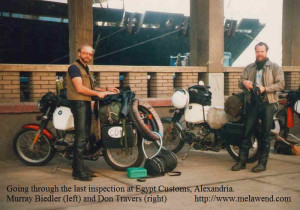
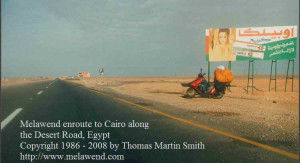
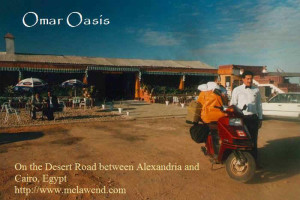
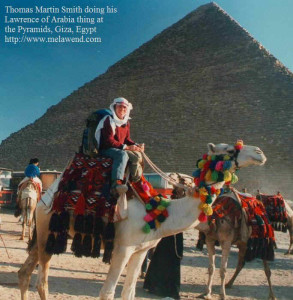
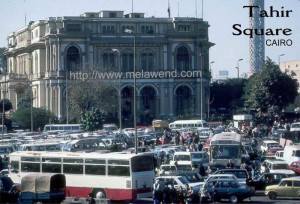
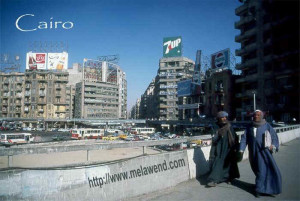
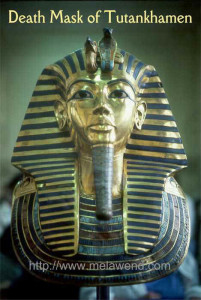
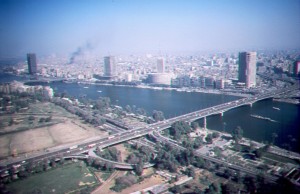
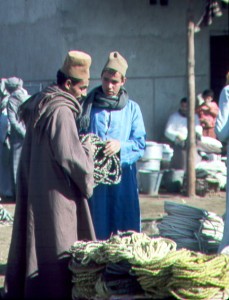
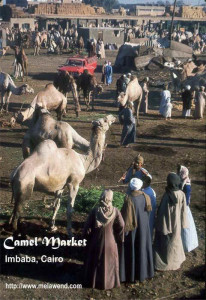
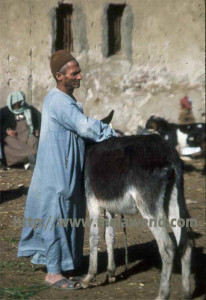
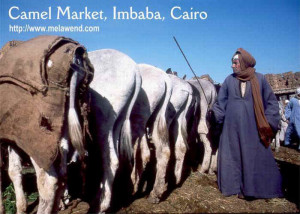
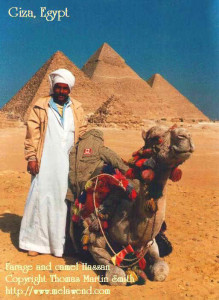
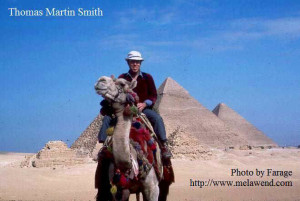
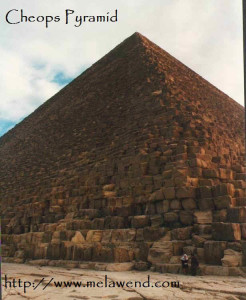
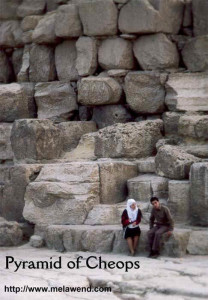
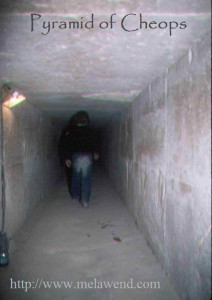
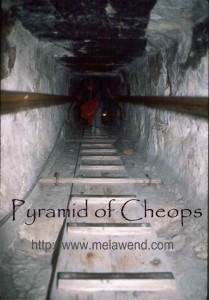
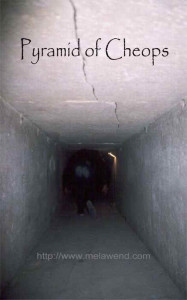
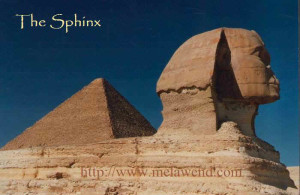
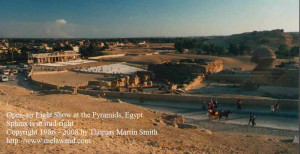
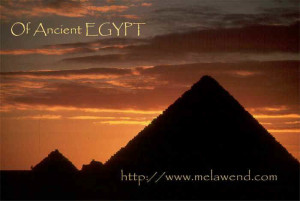
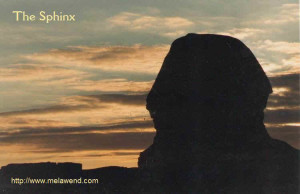
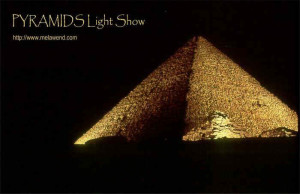
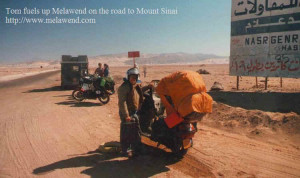
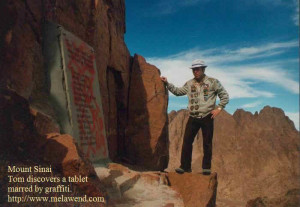
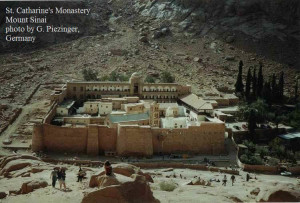
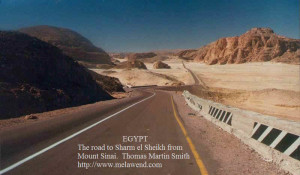
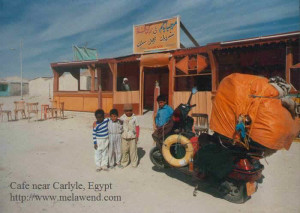
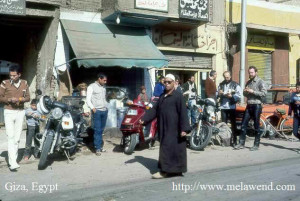
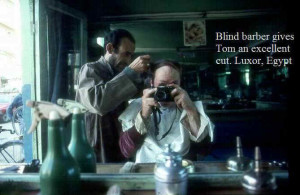
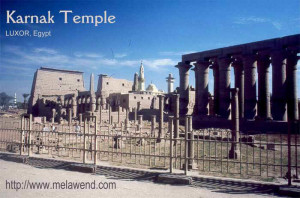
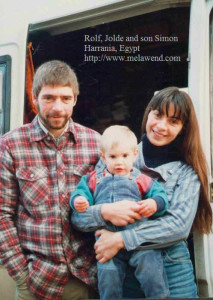
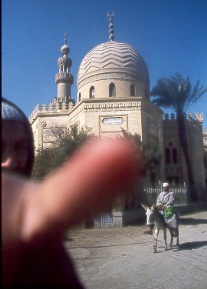
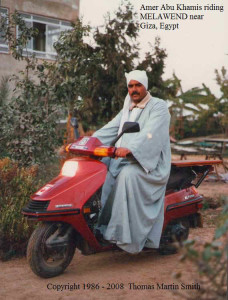
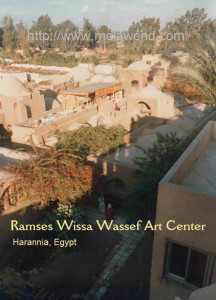
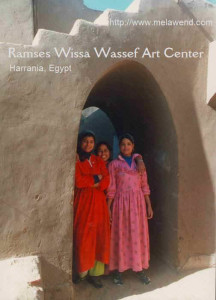
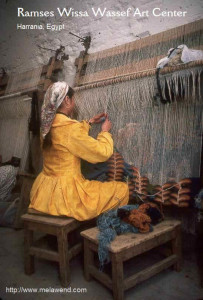
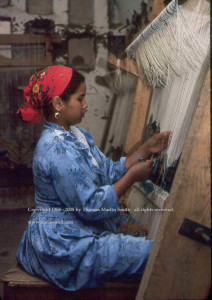
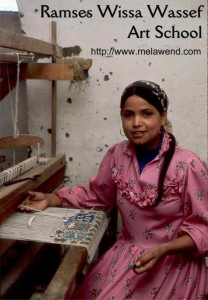
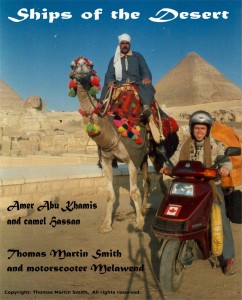
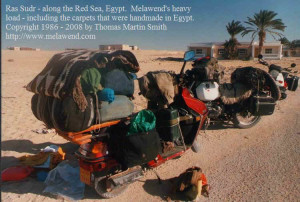
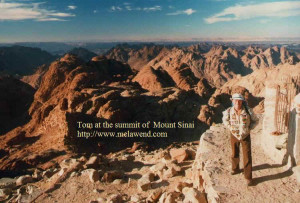
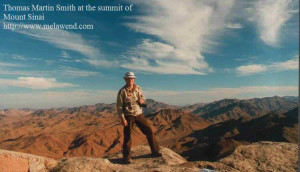
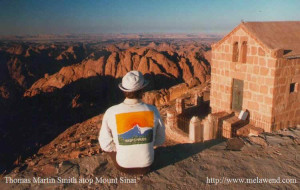

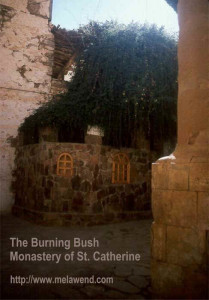
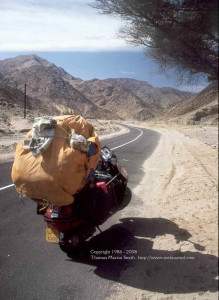
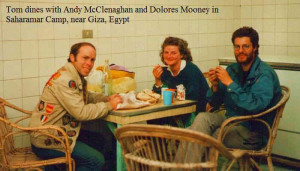
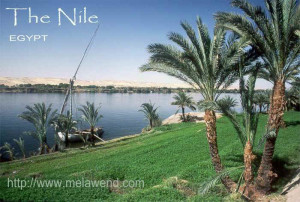
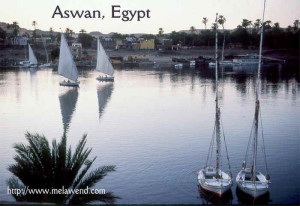
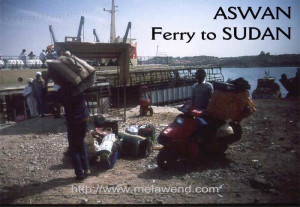

Recent Comments